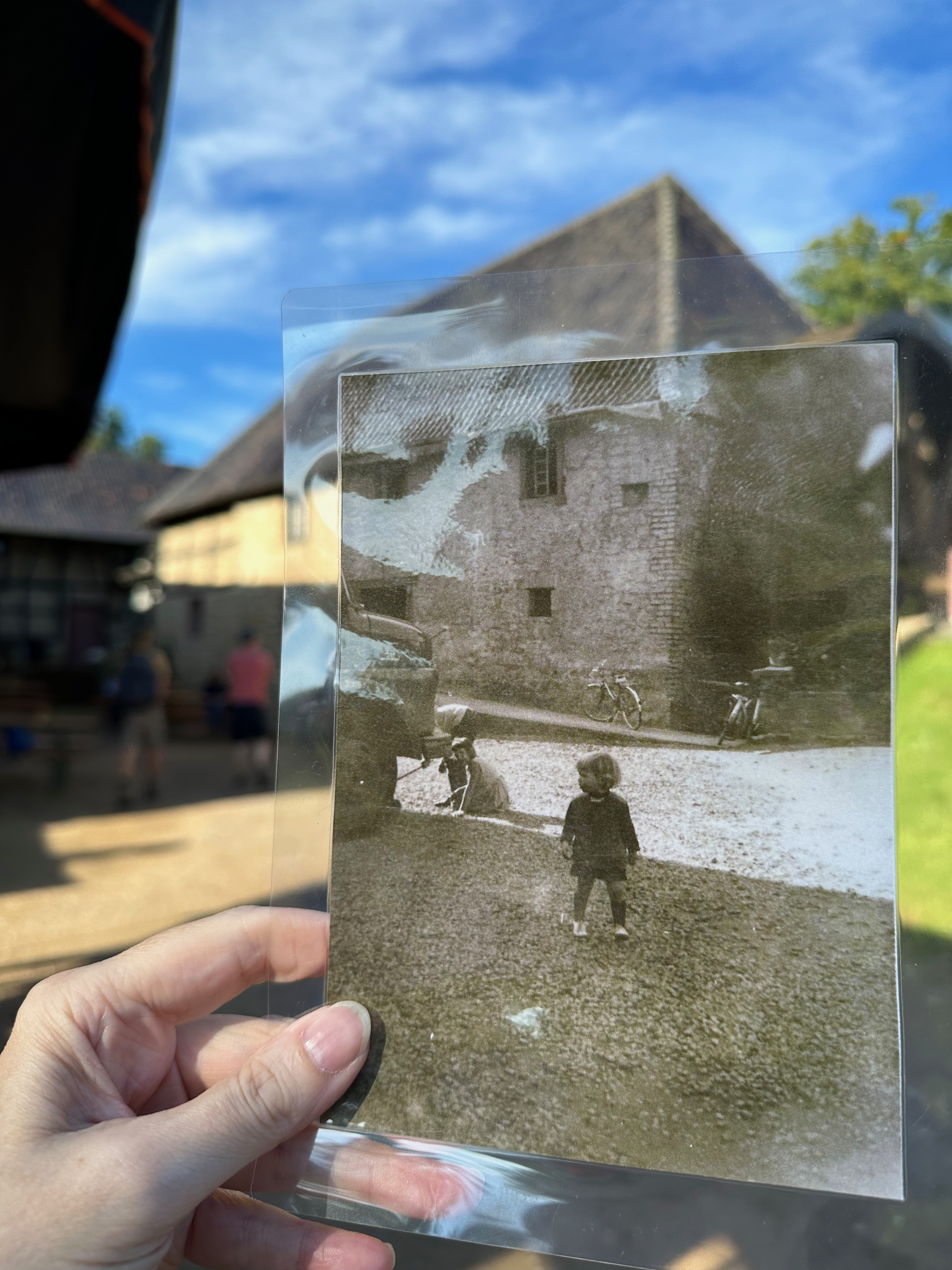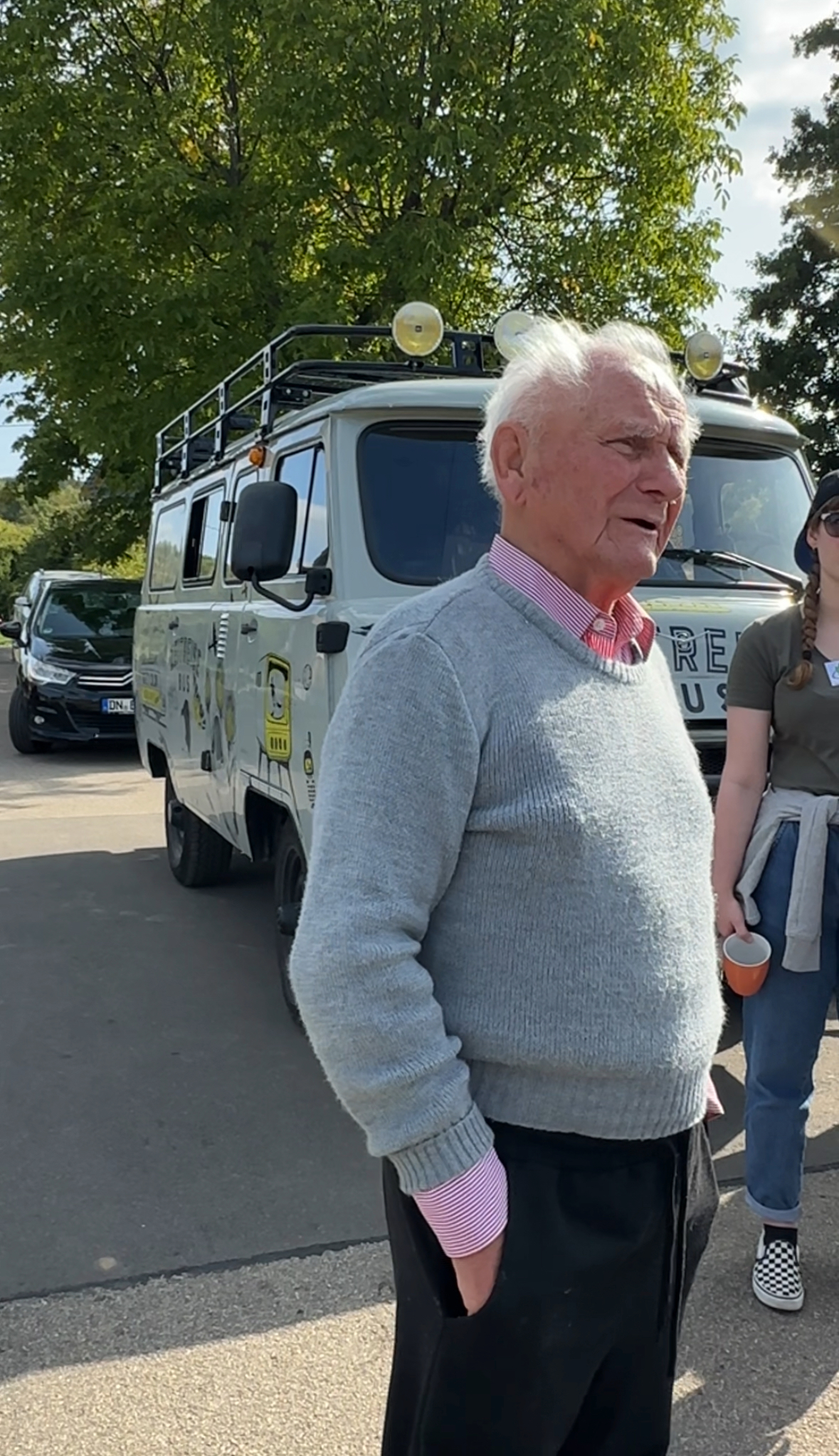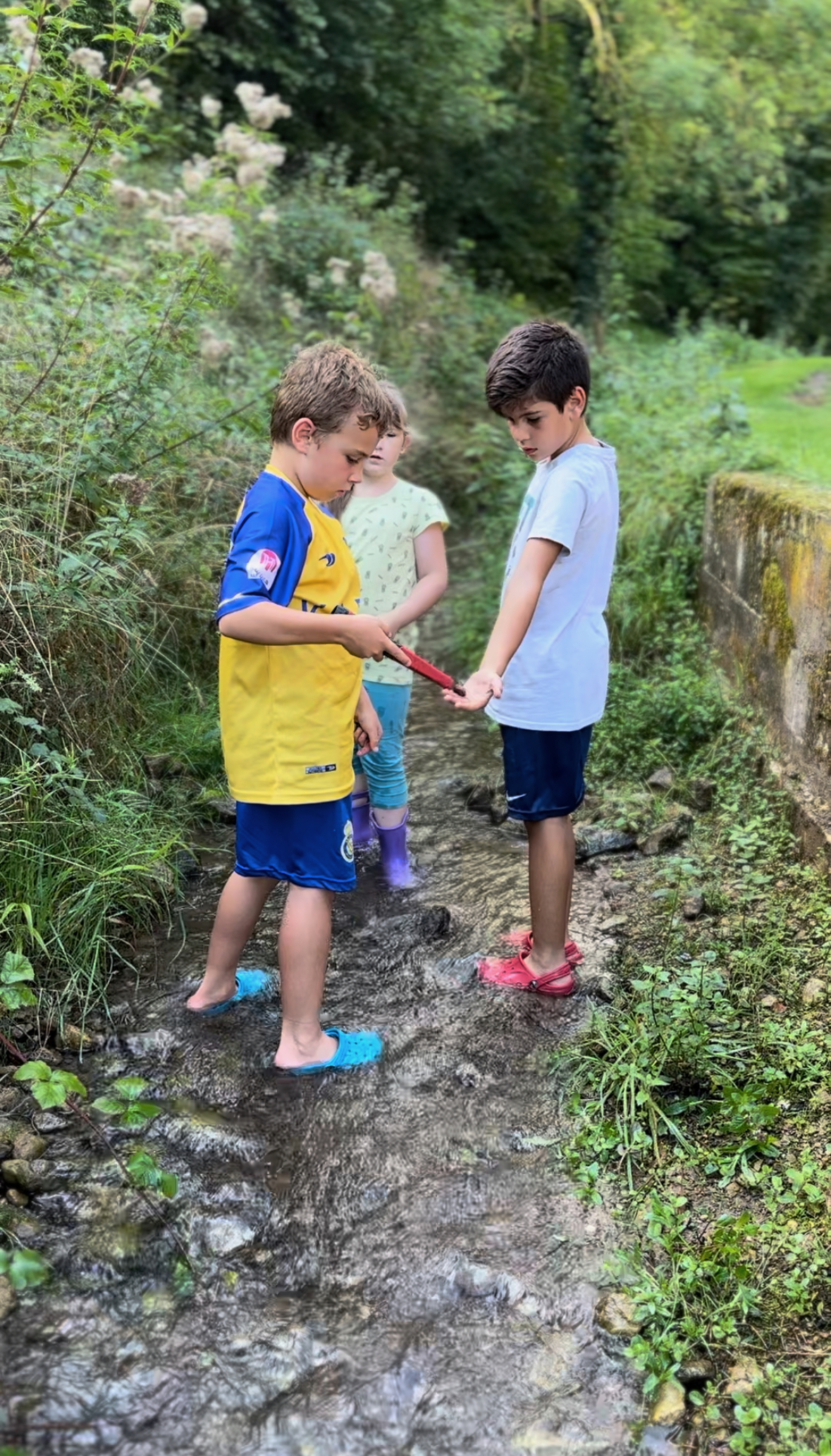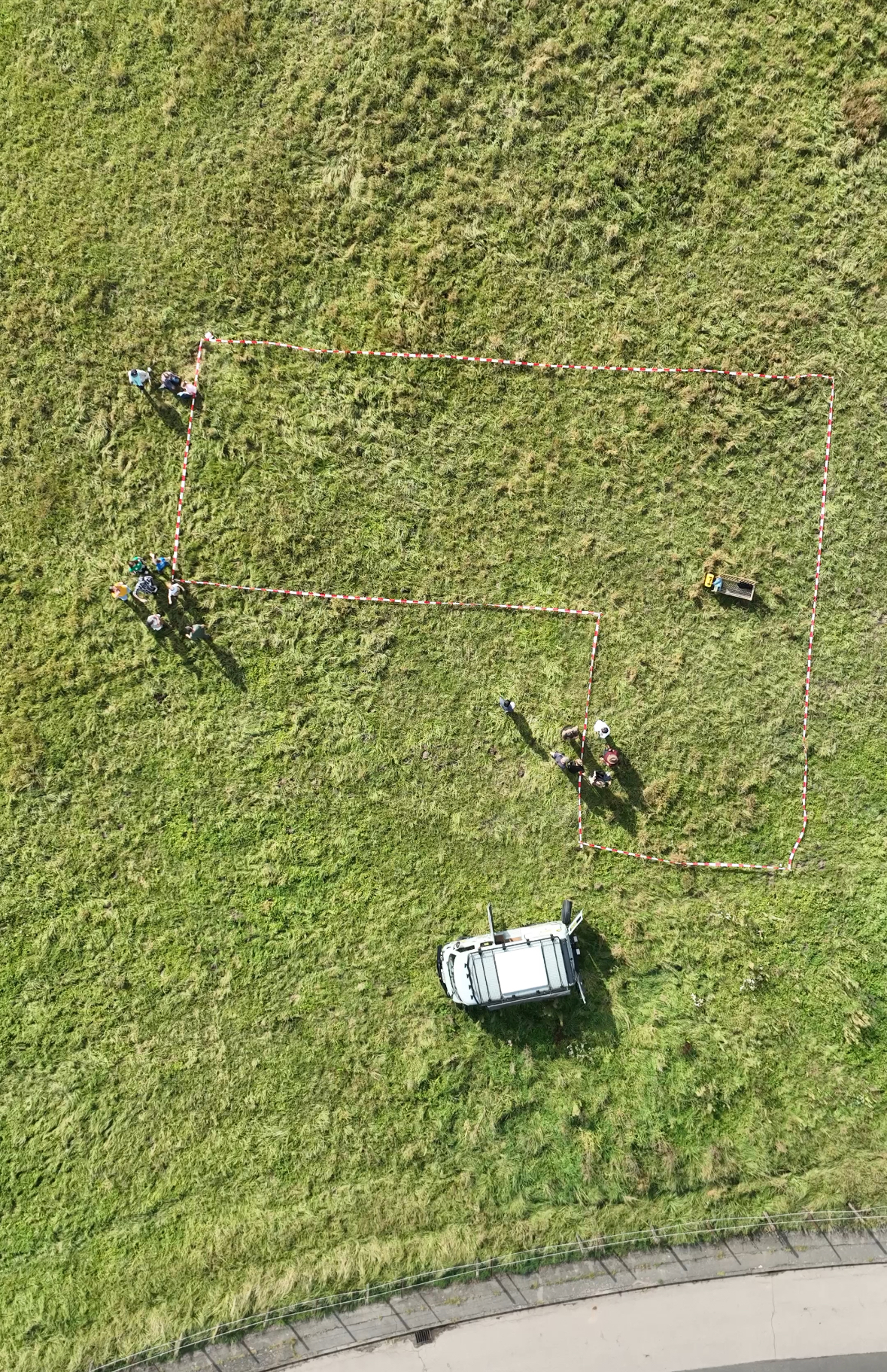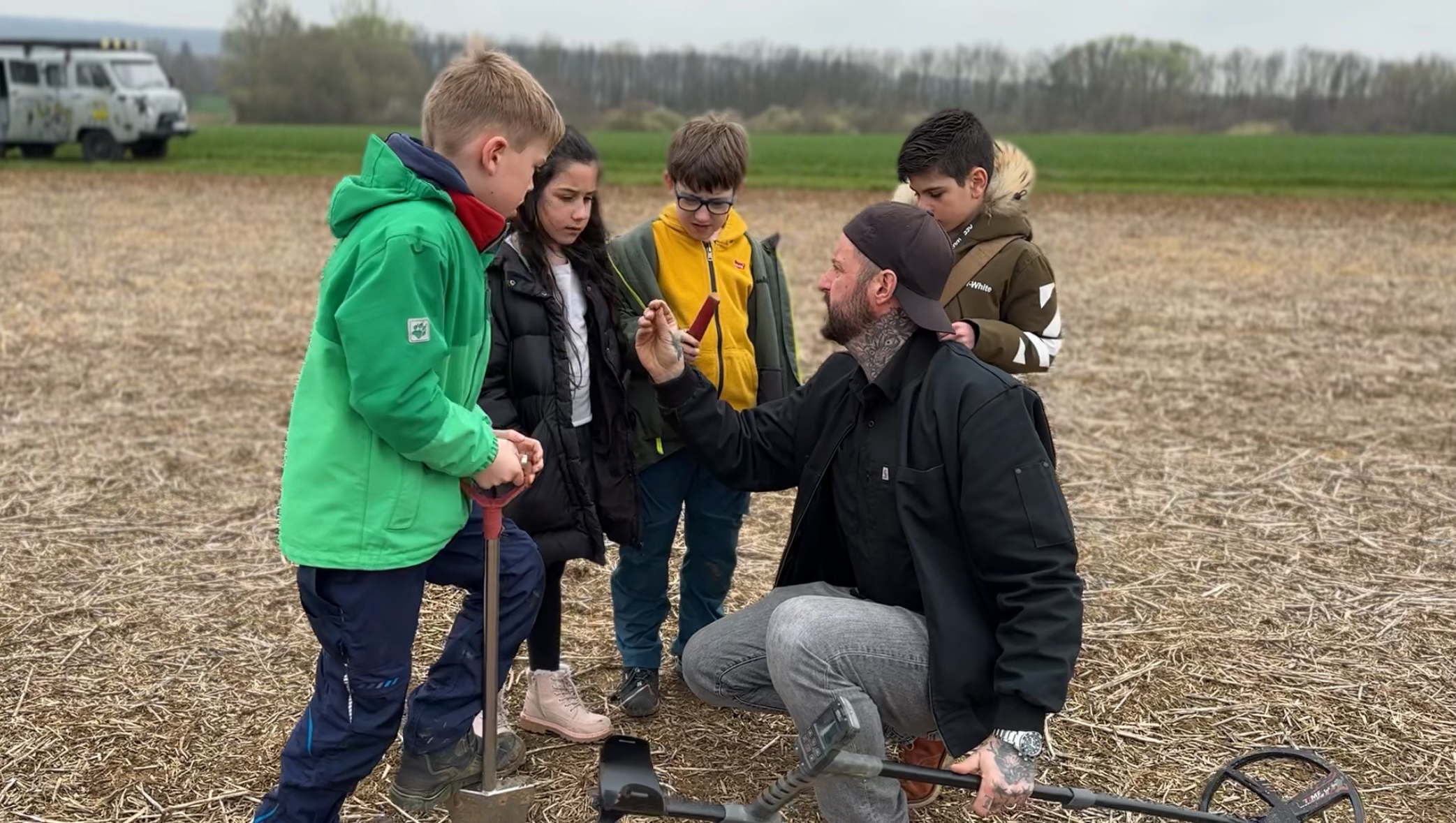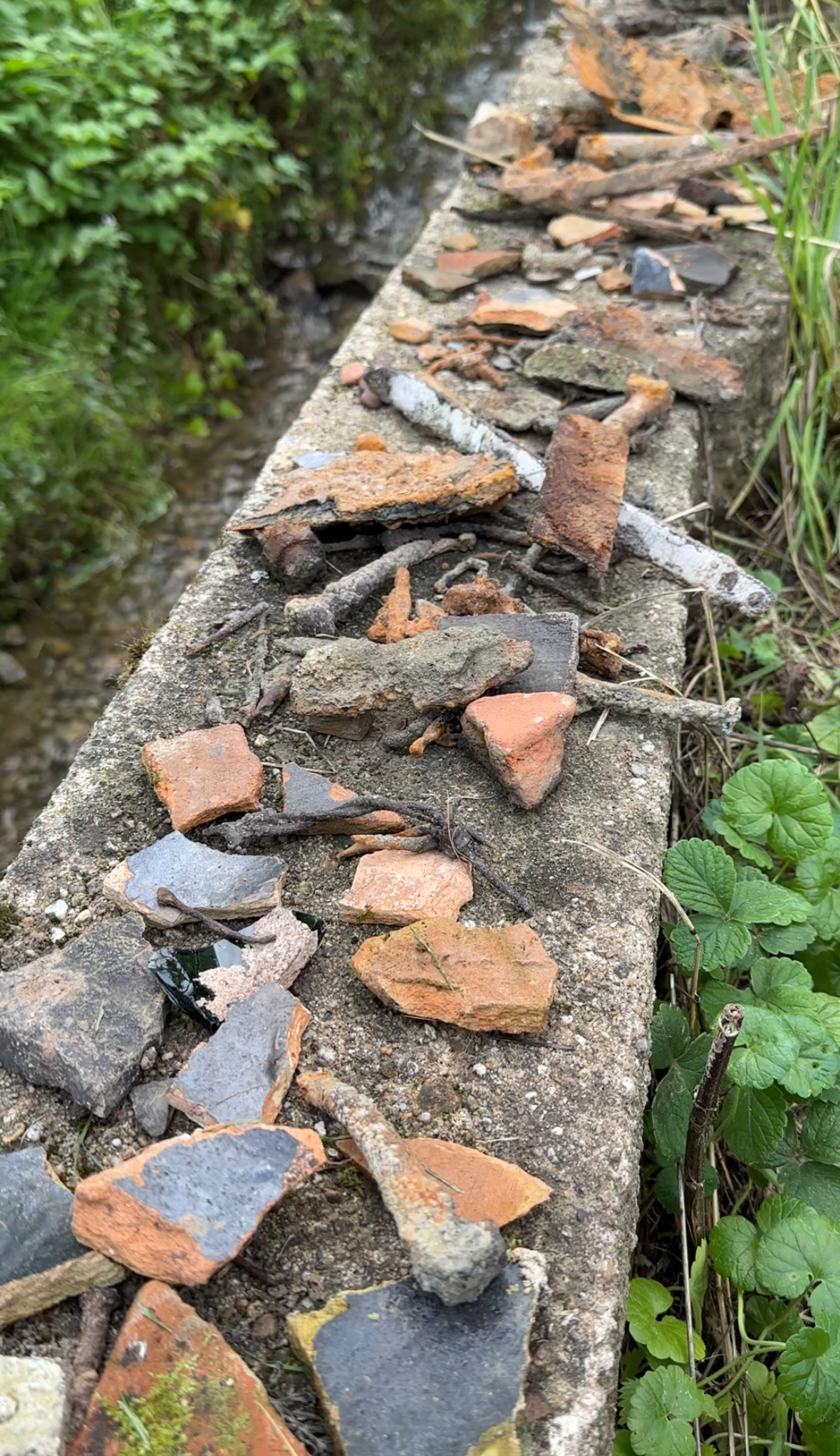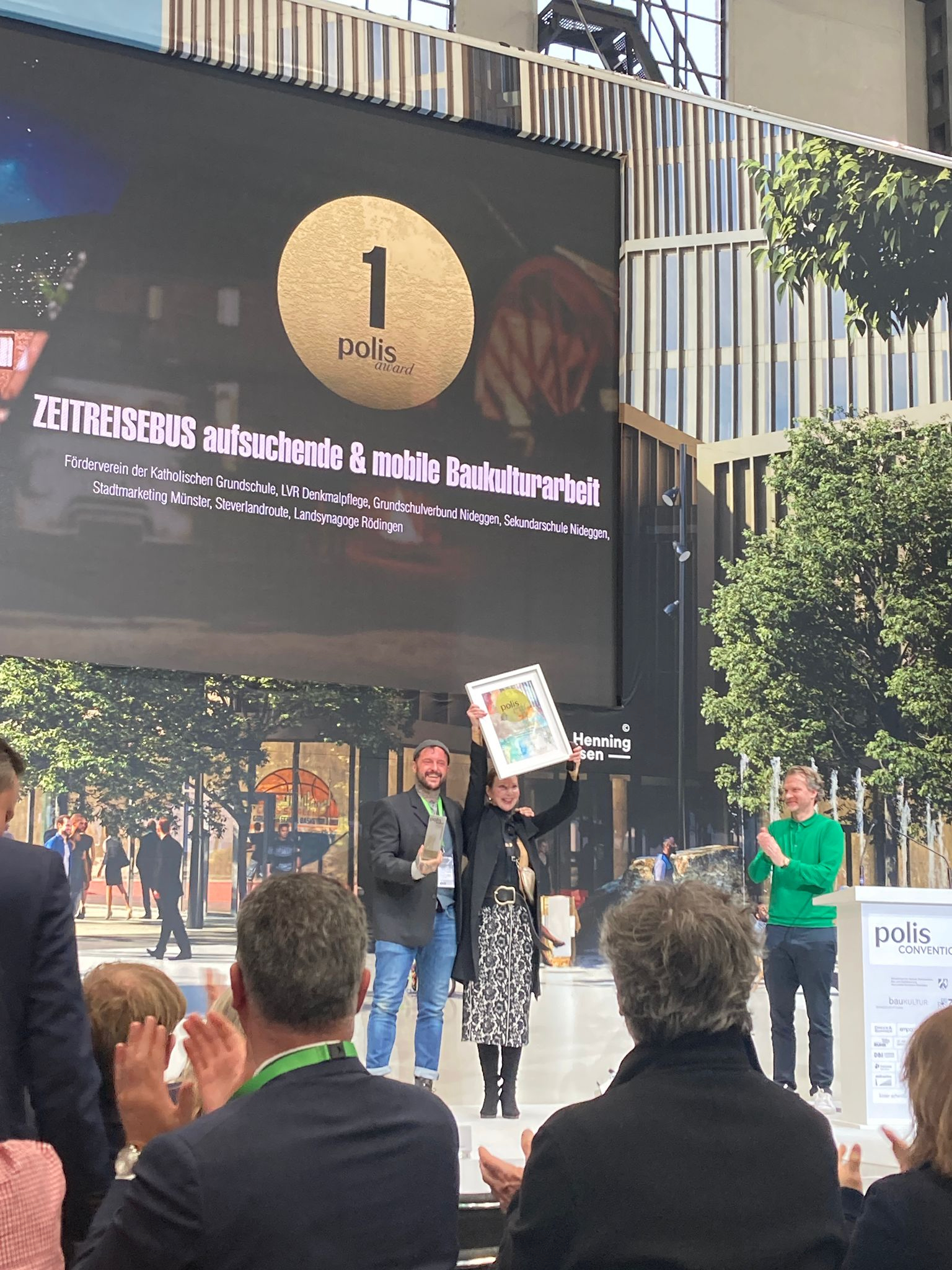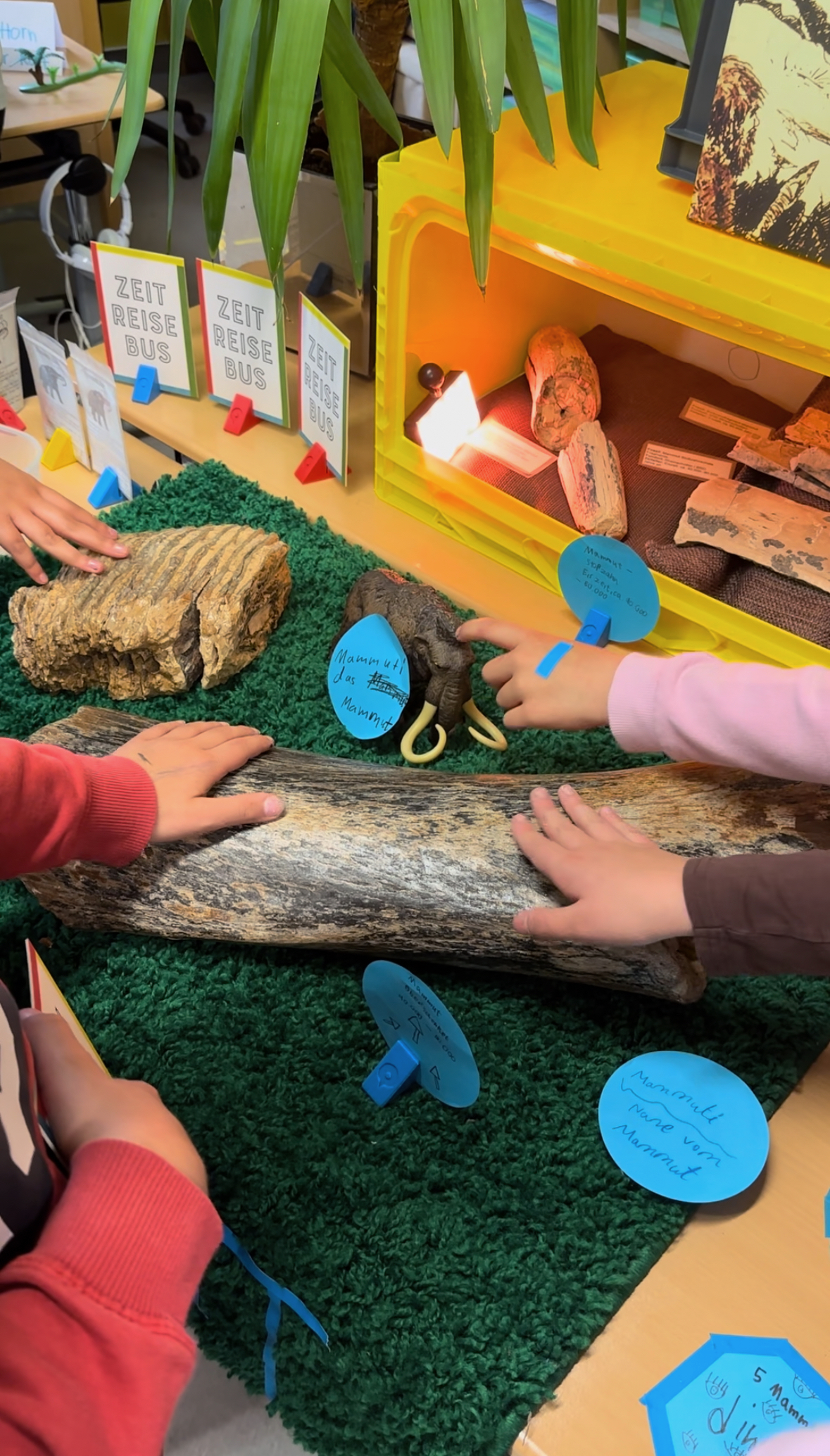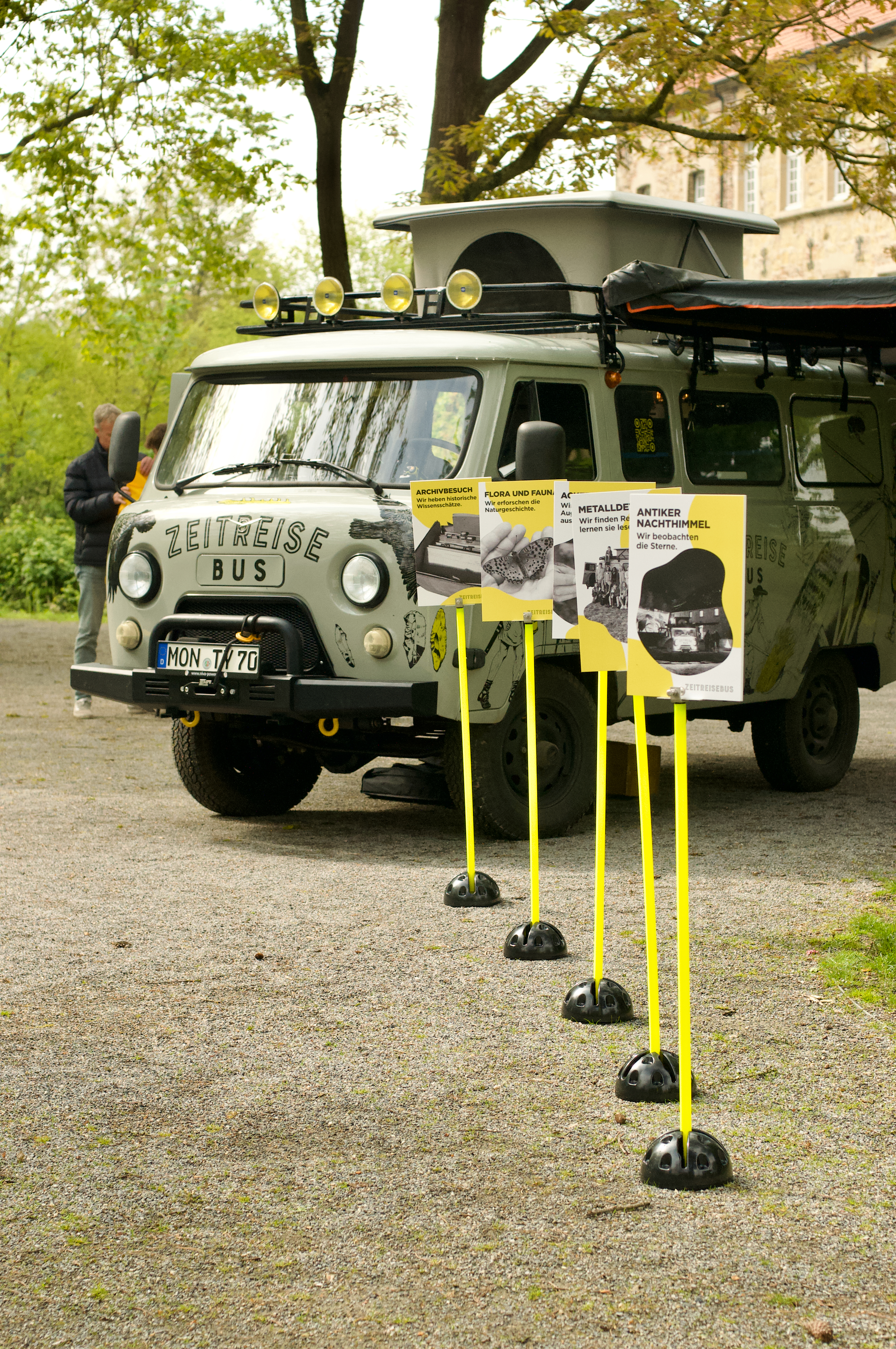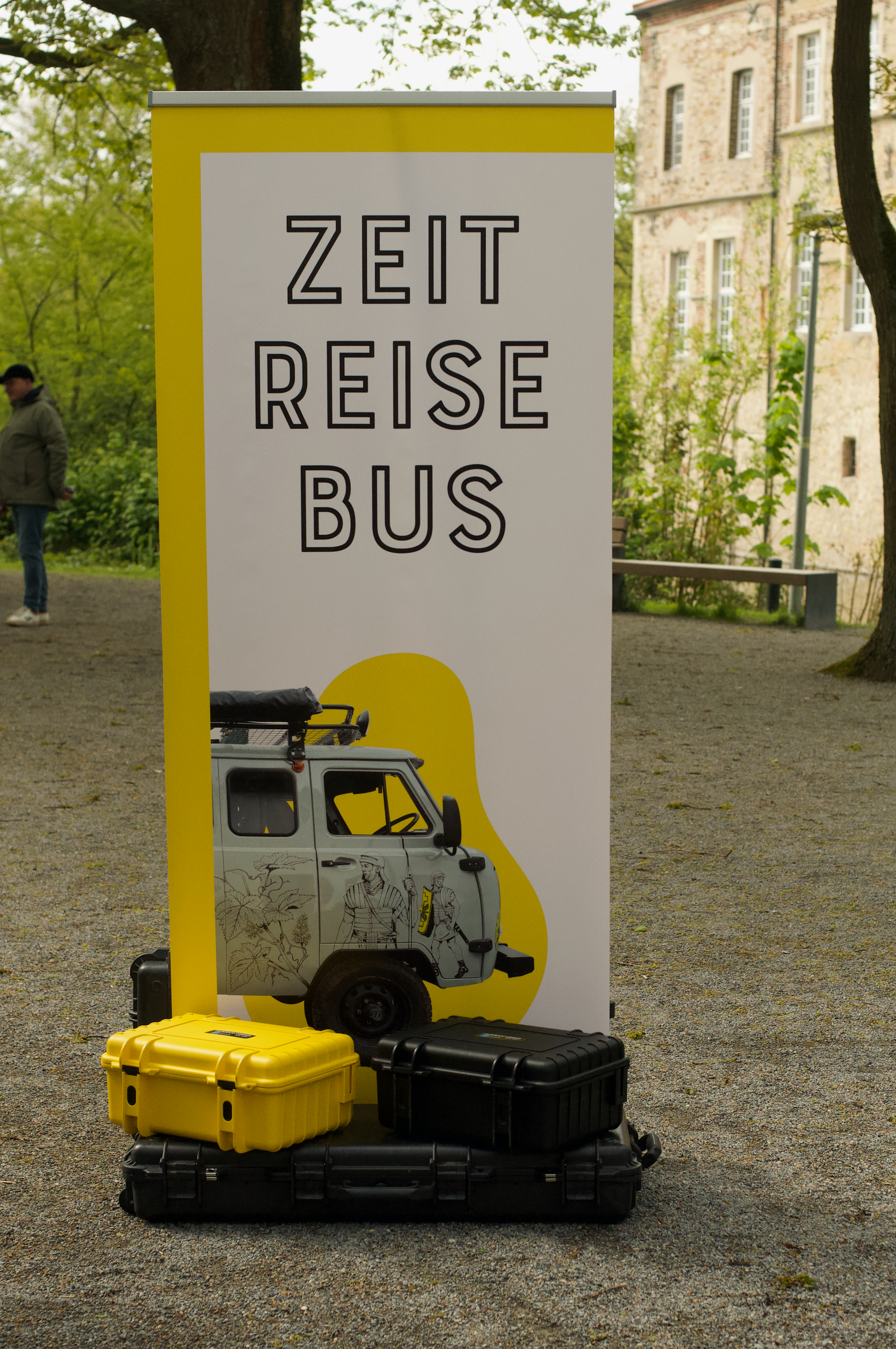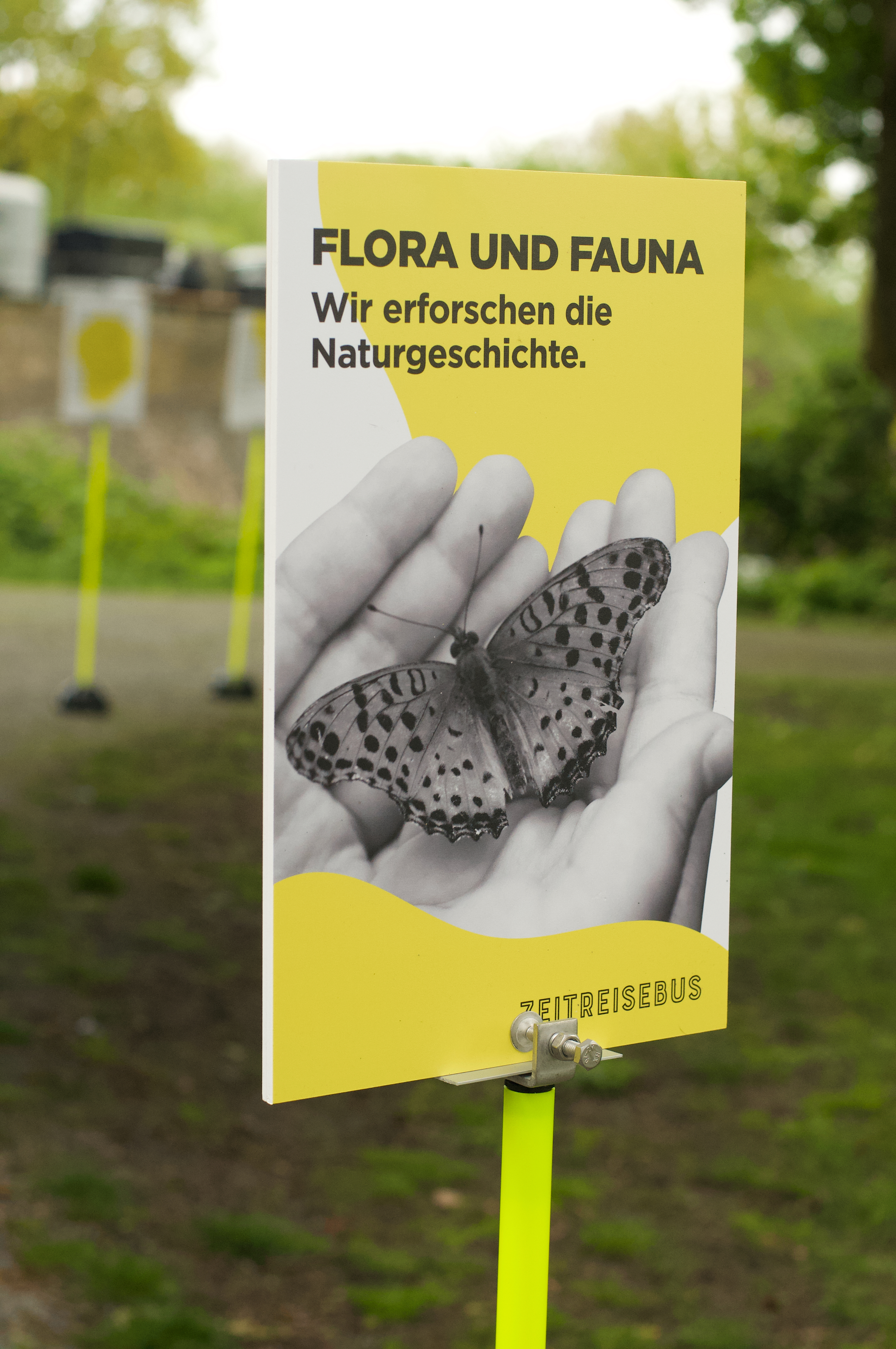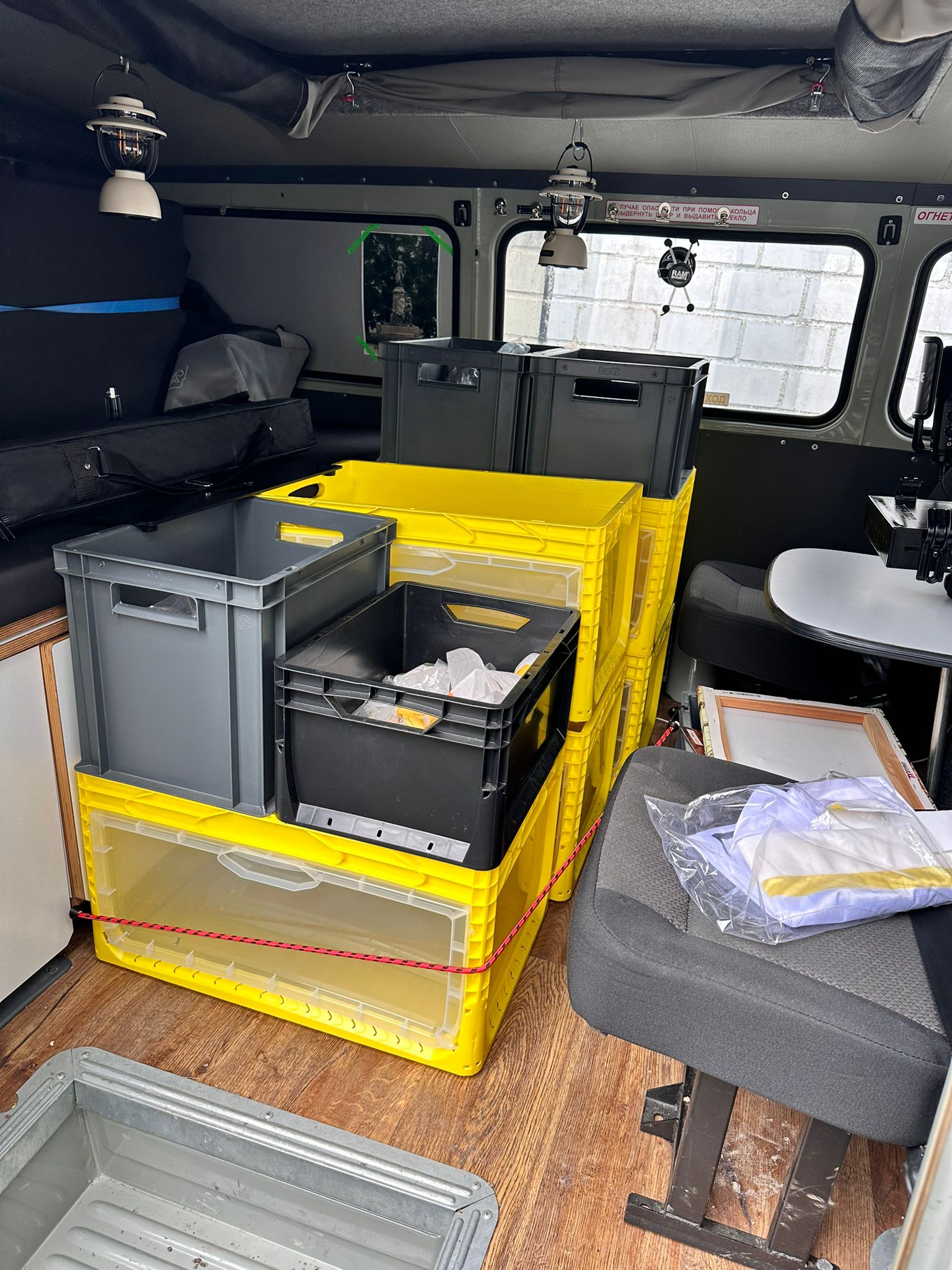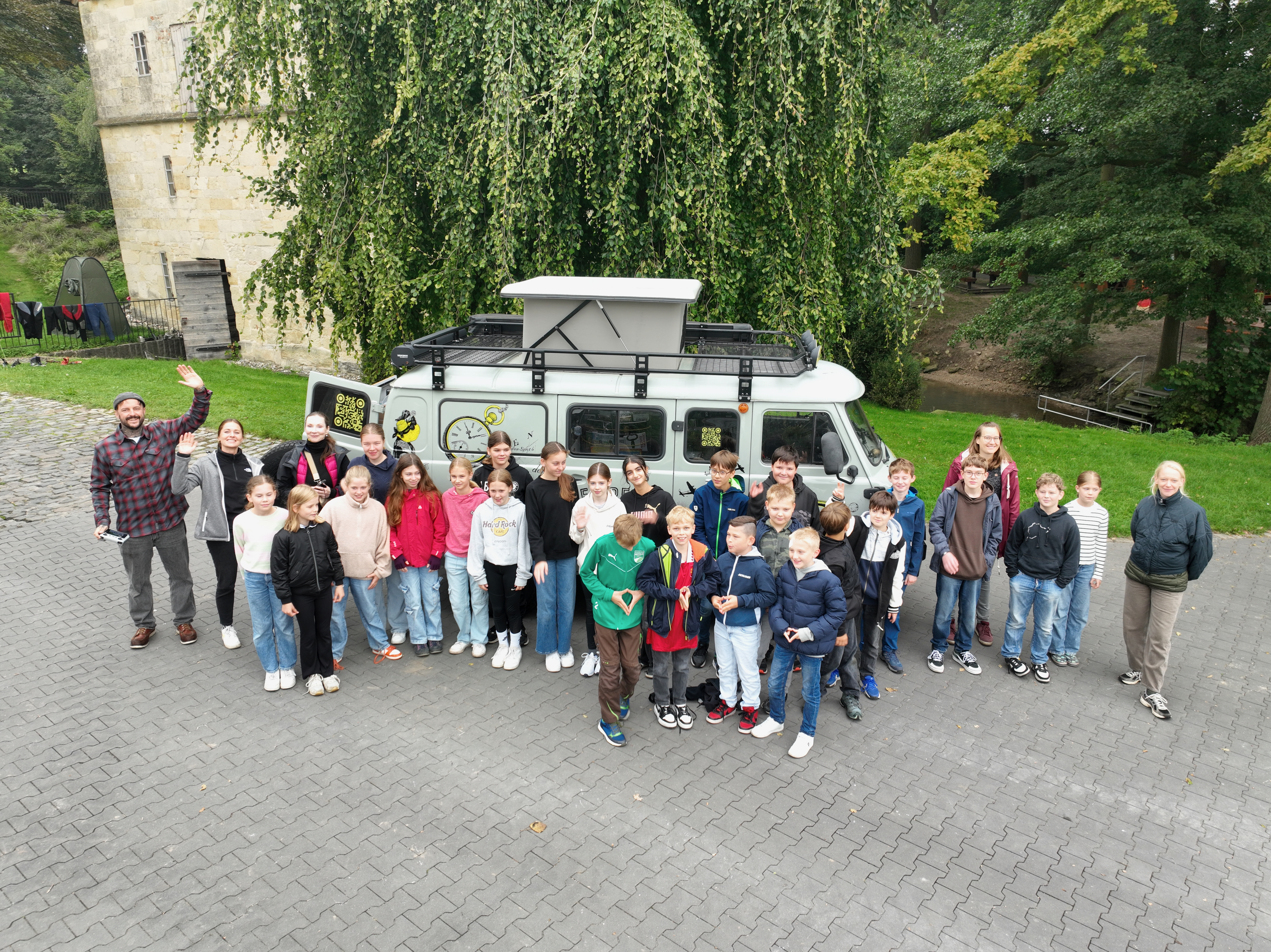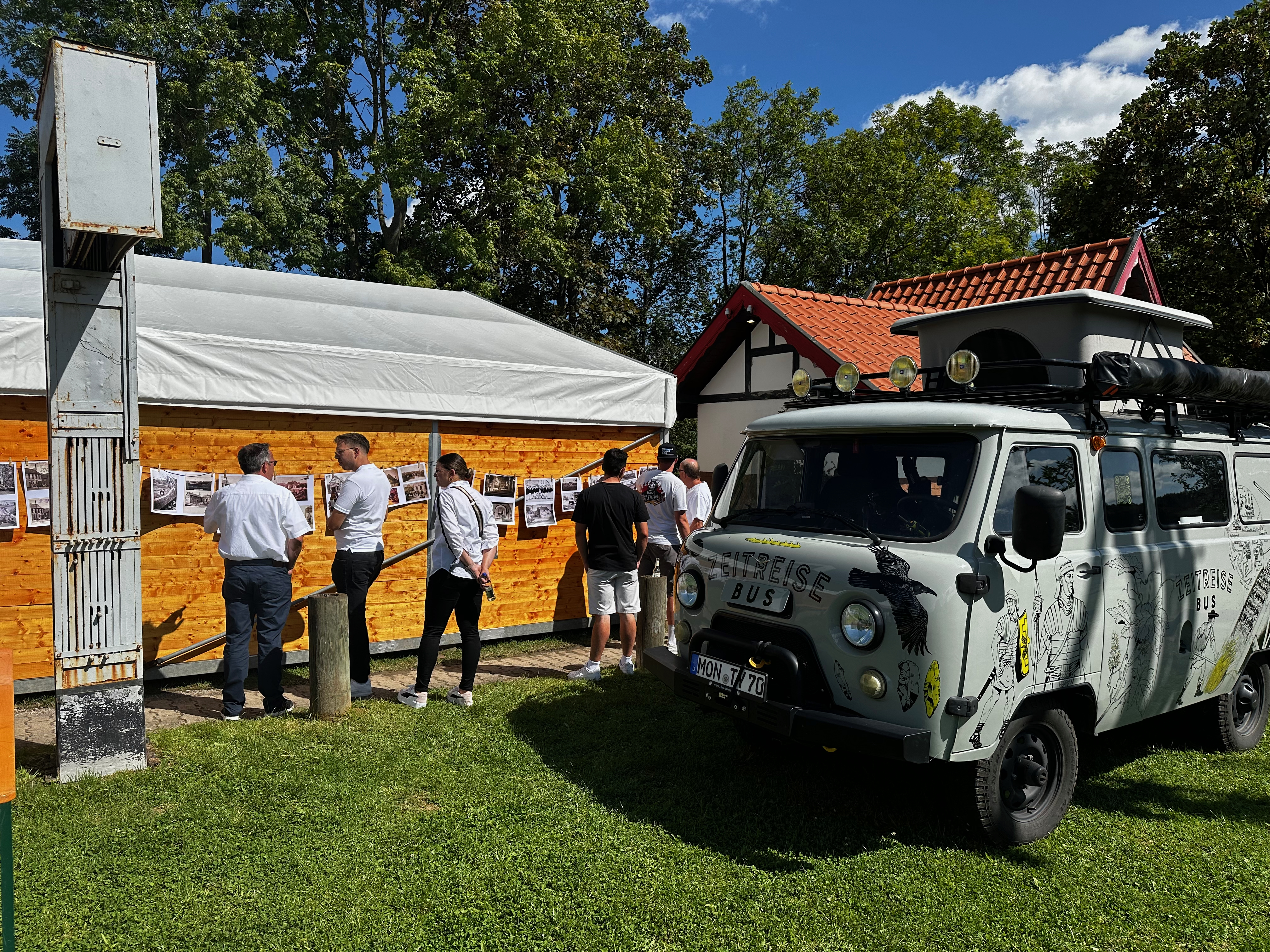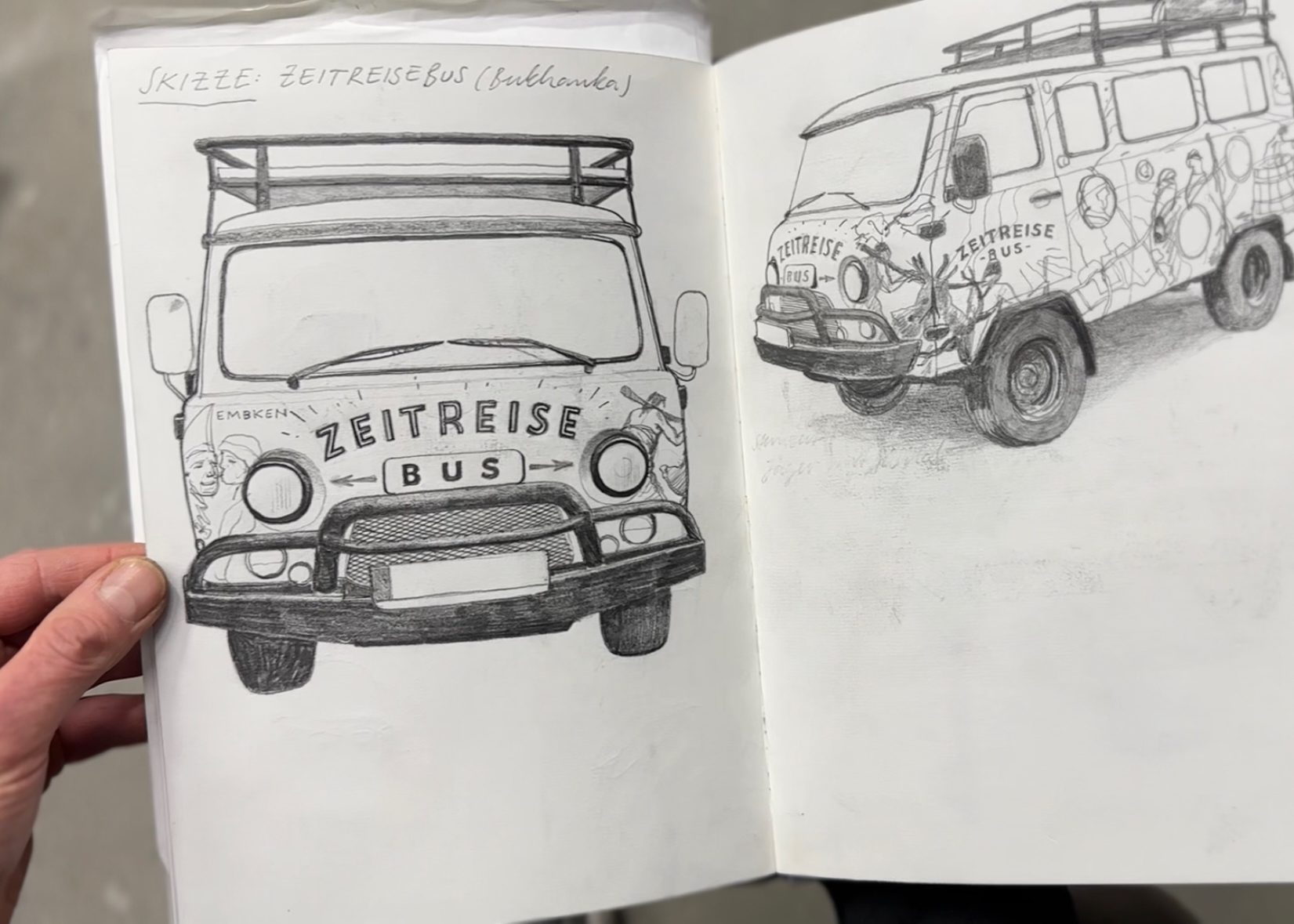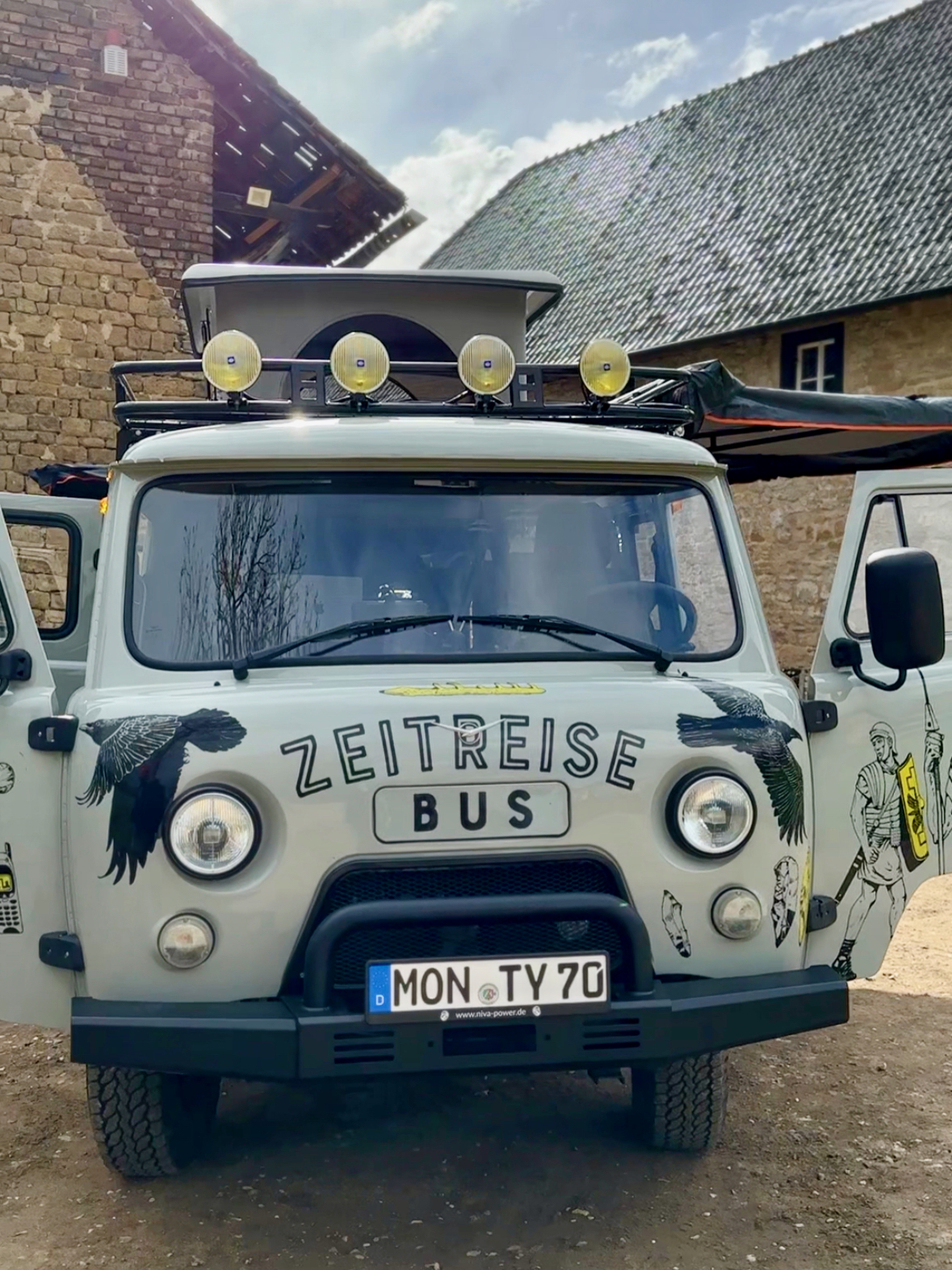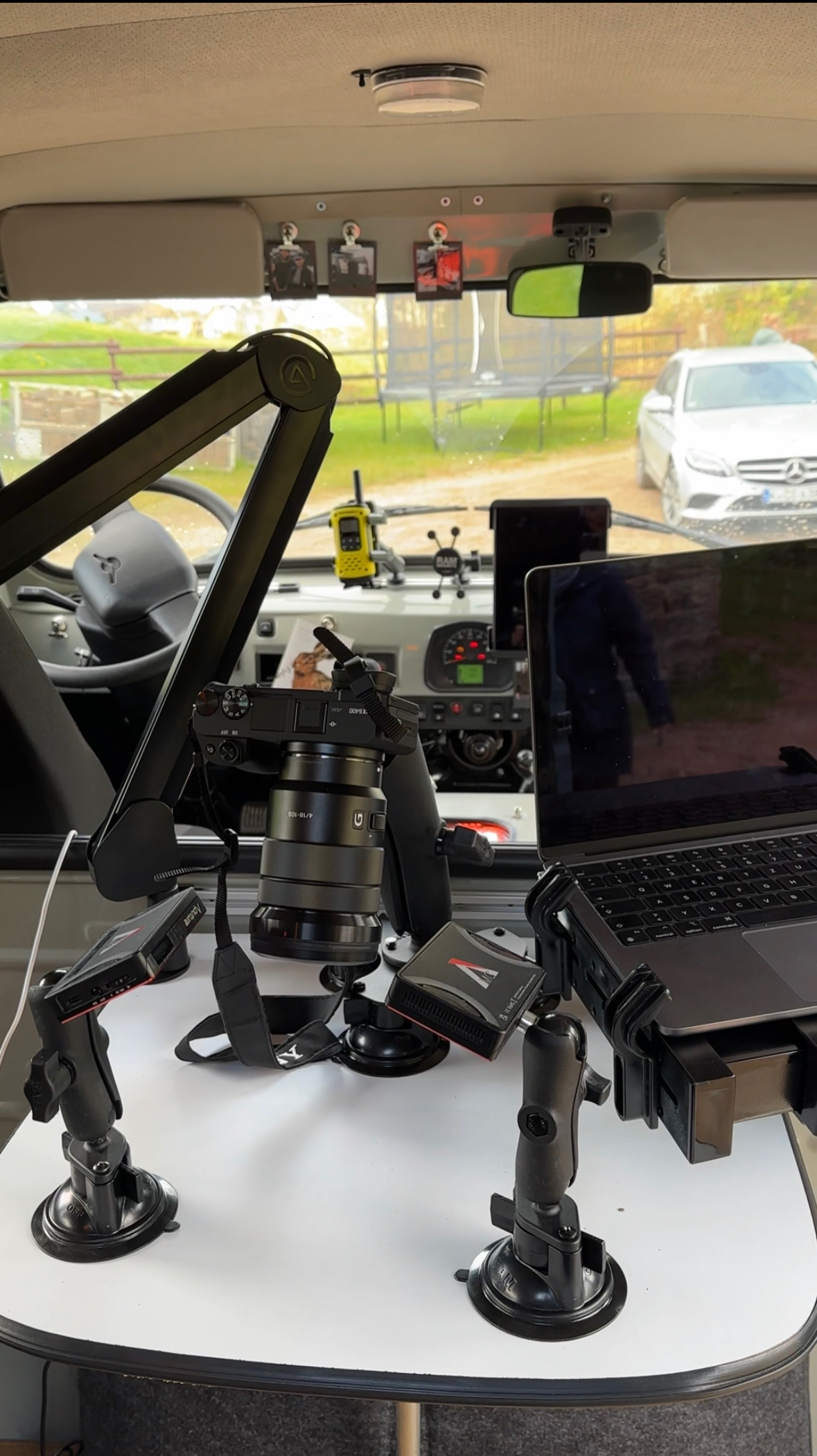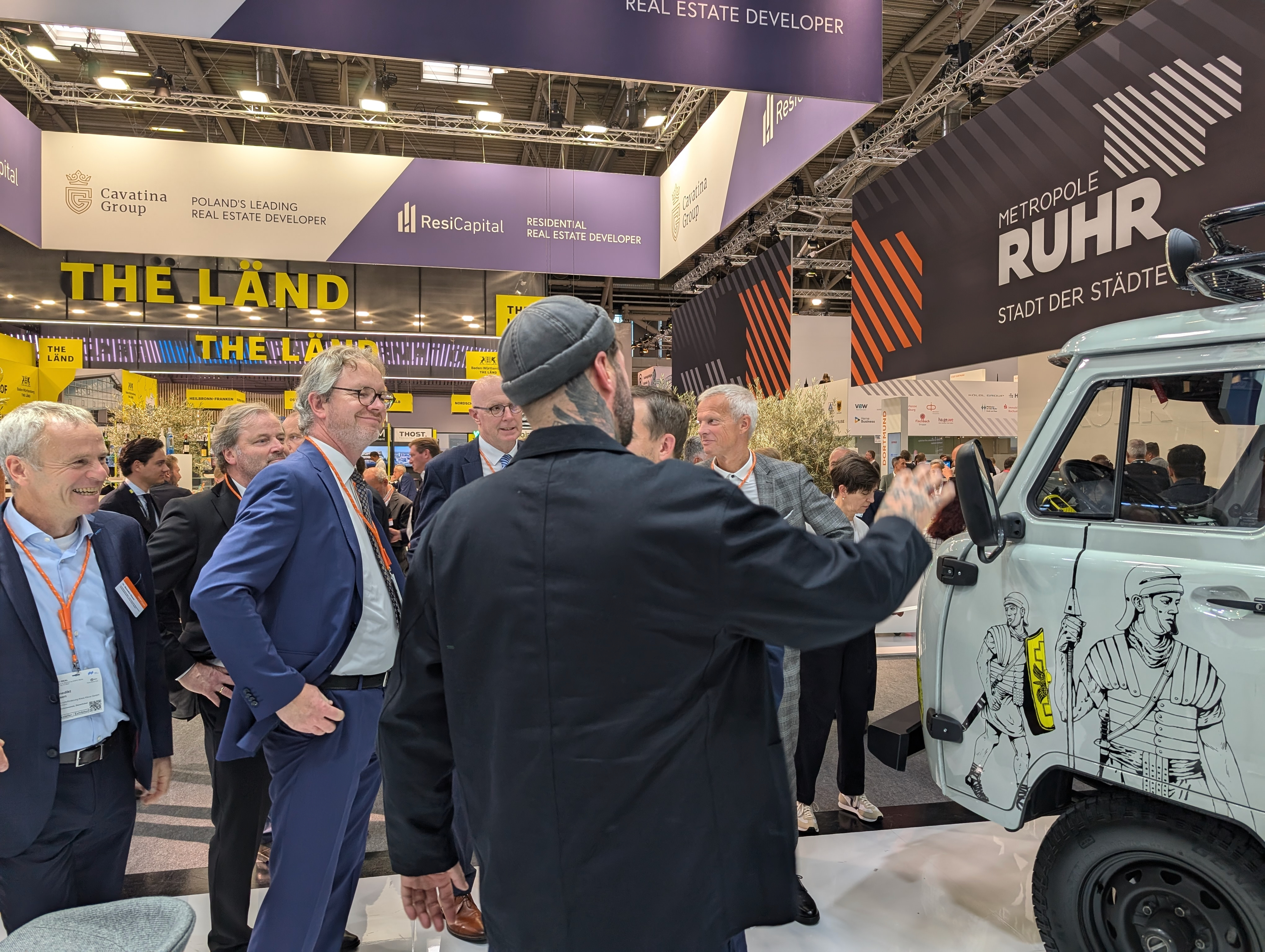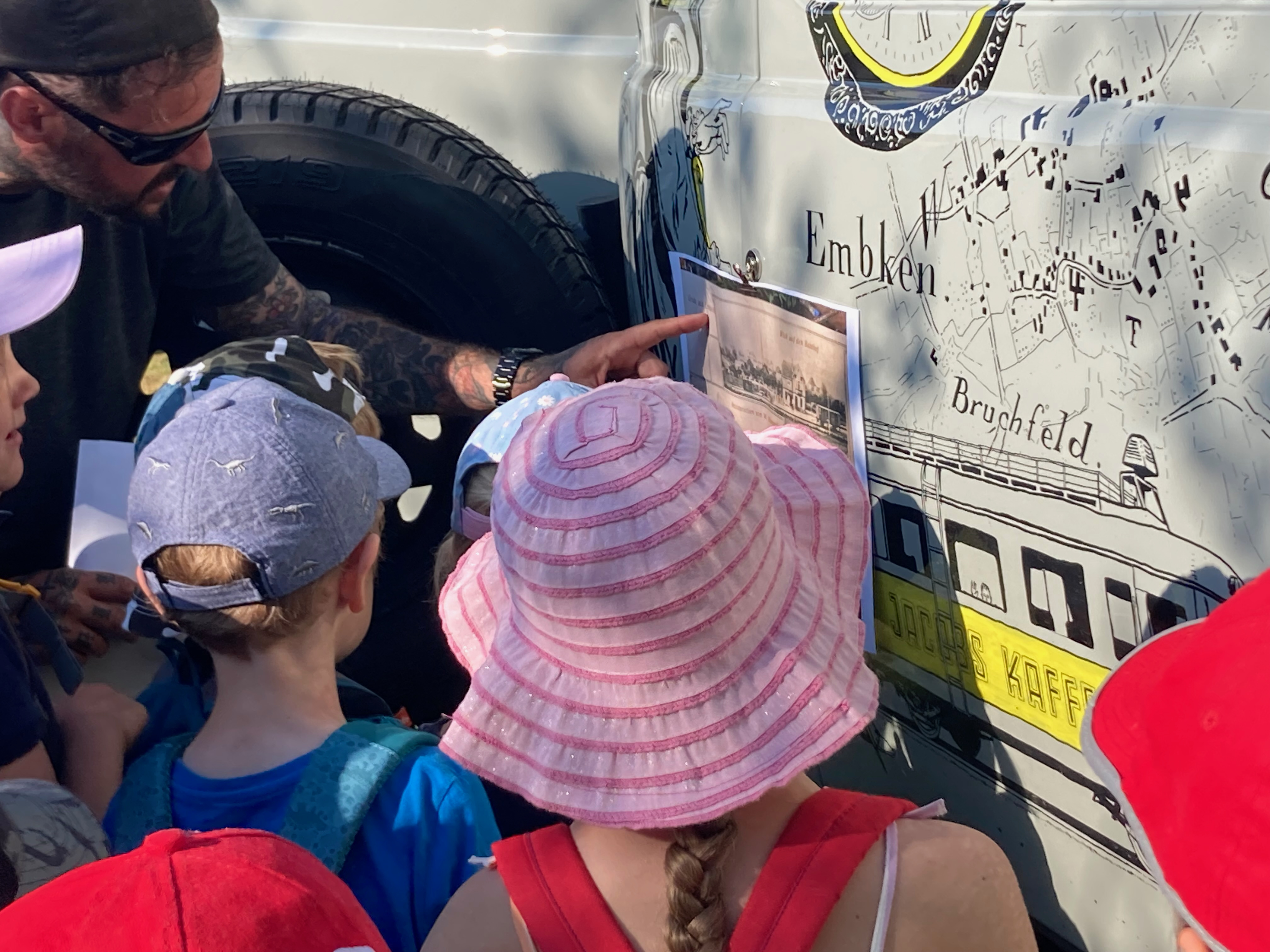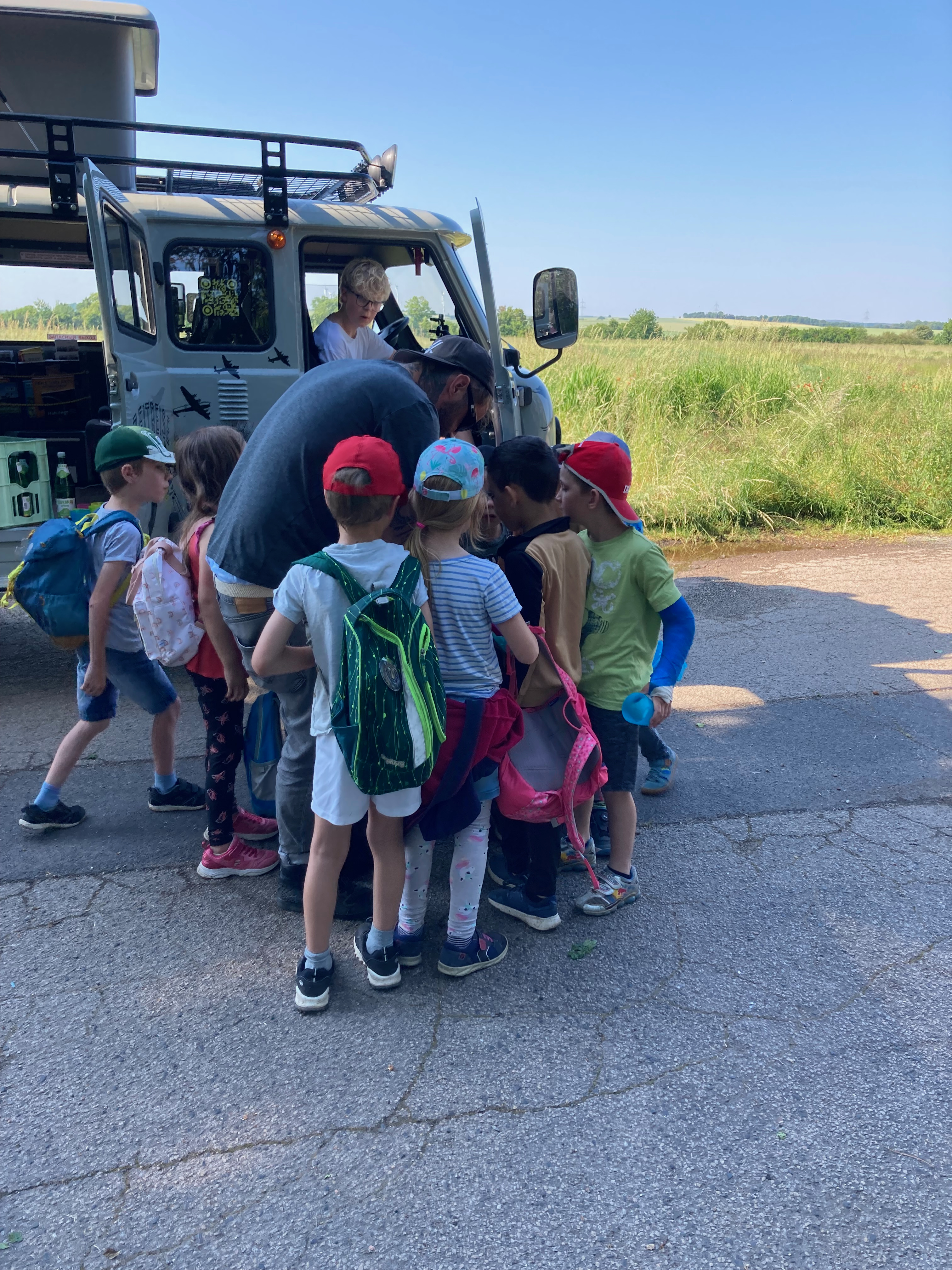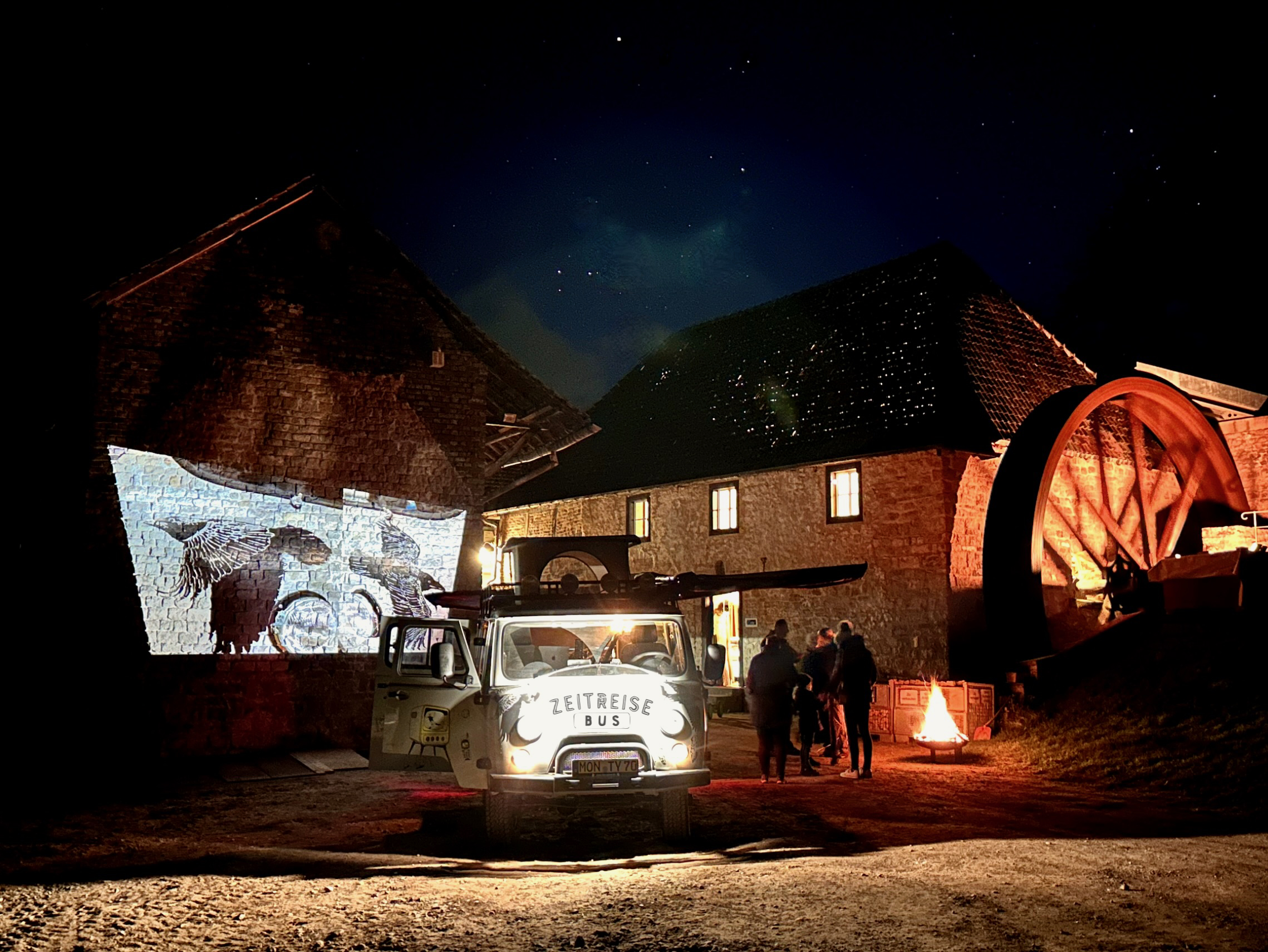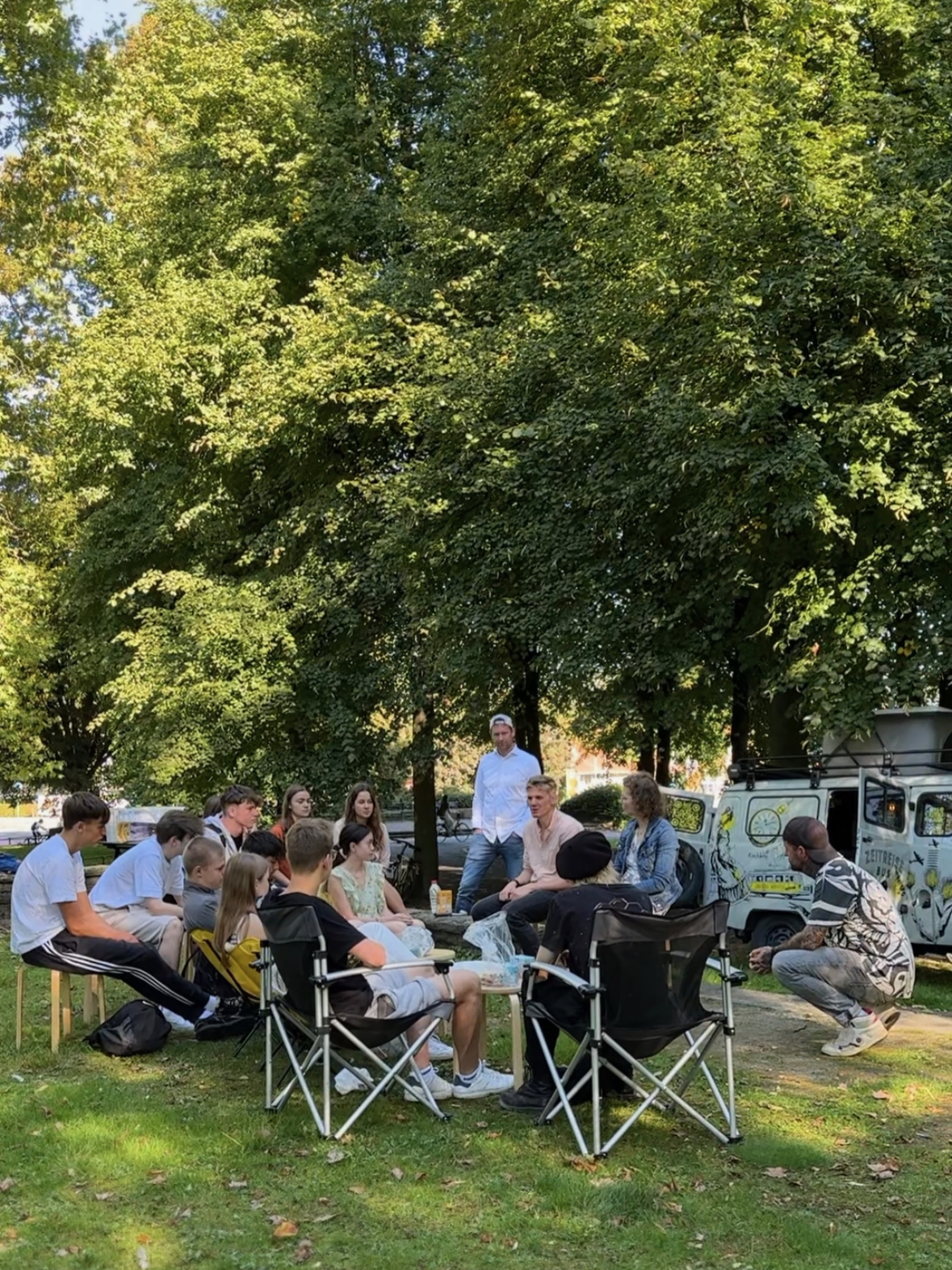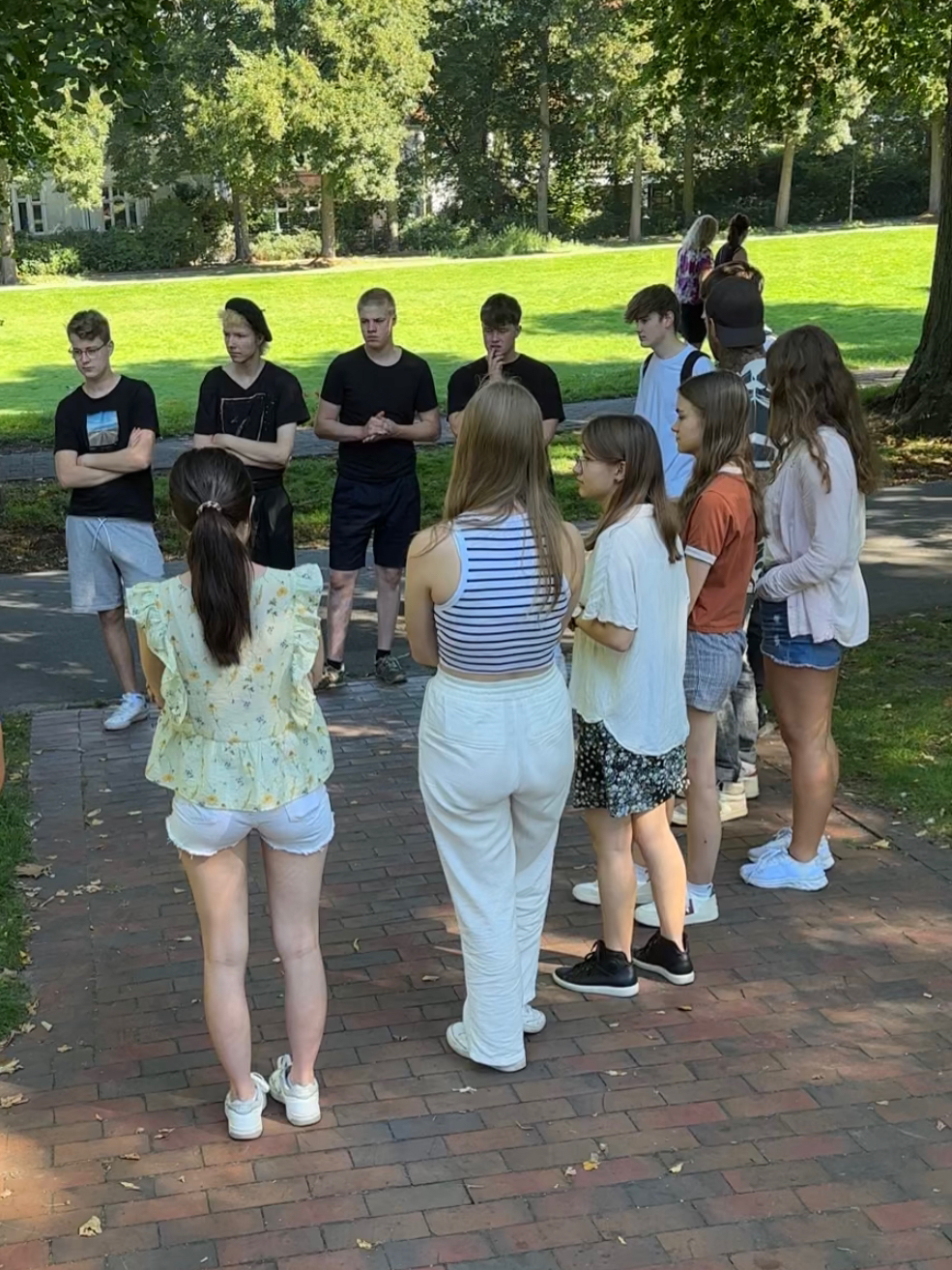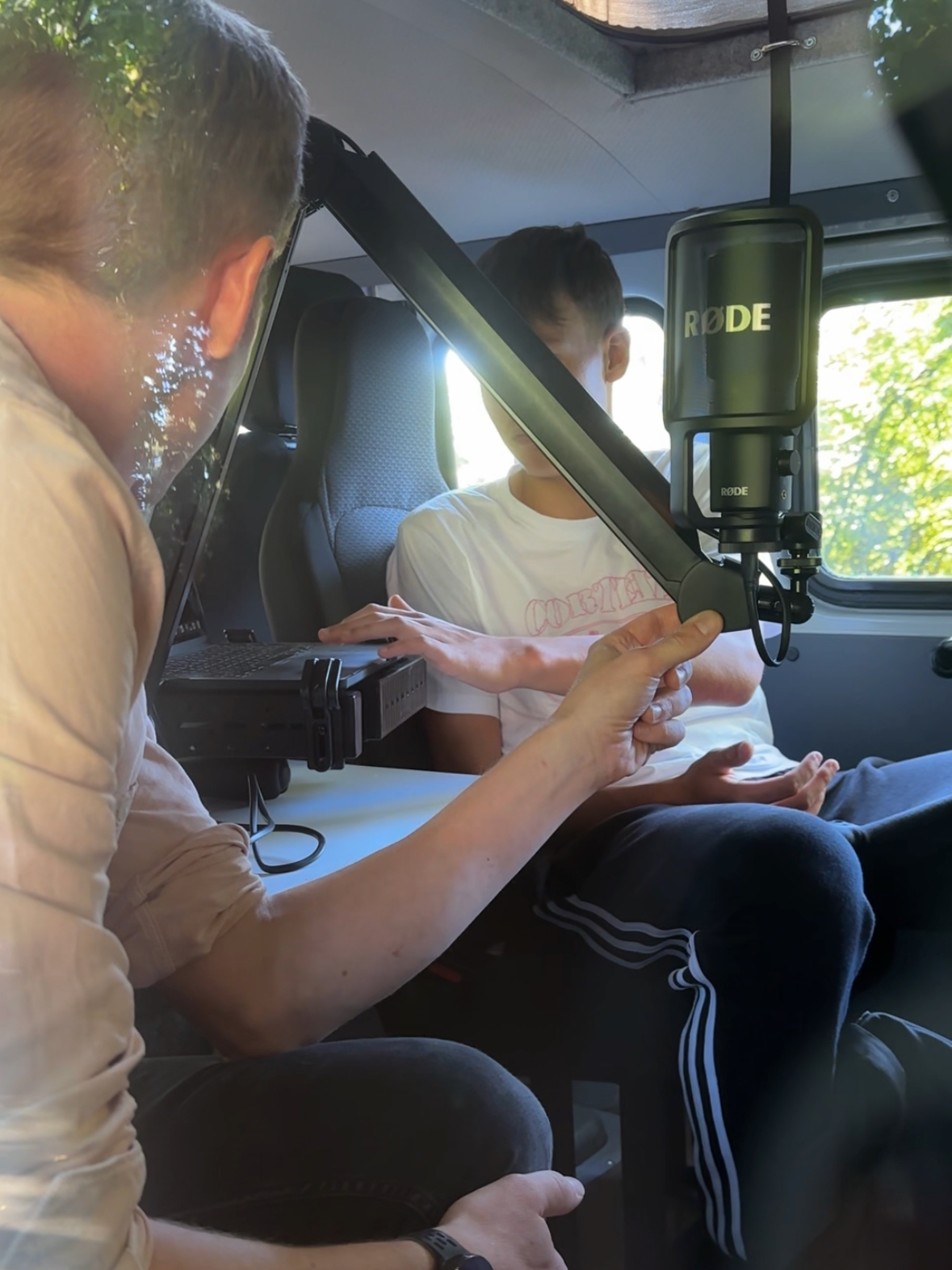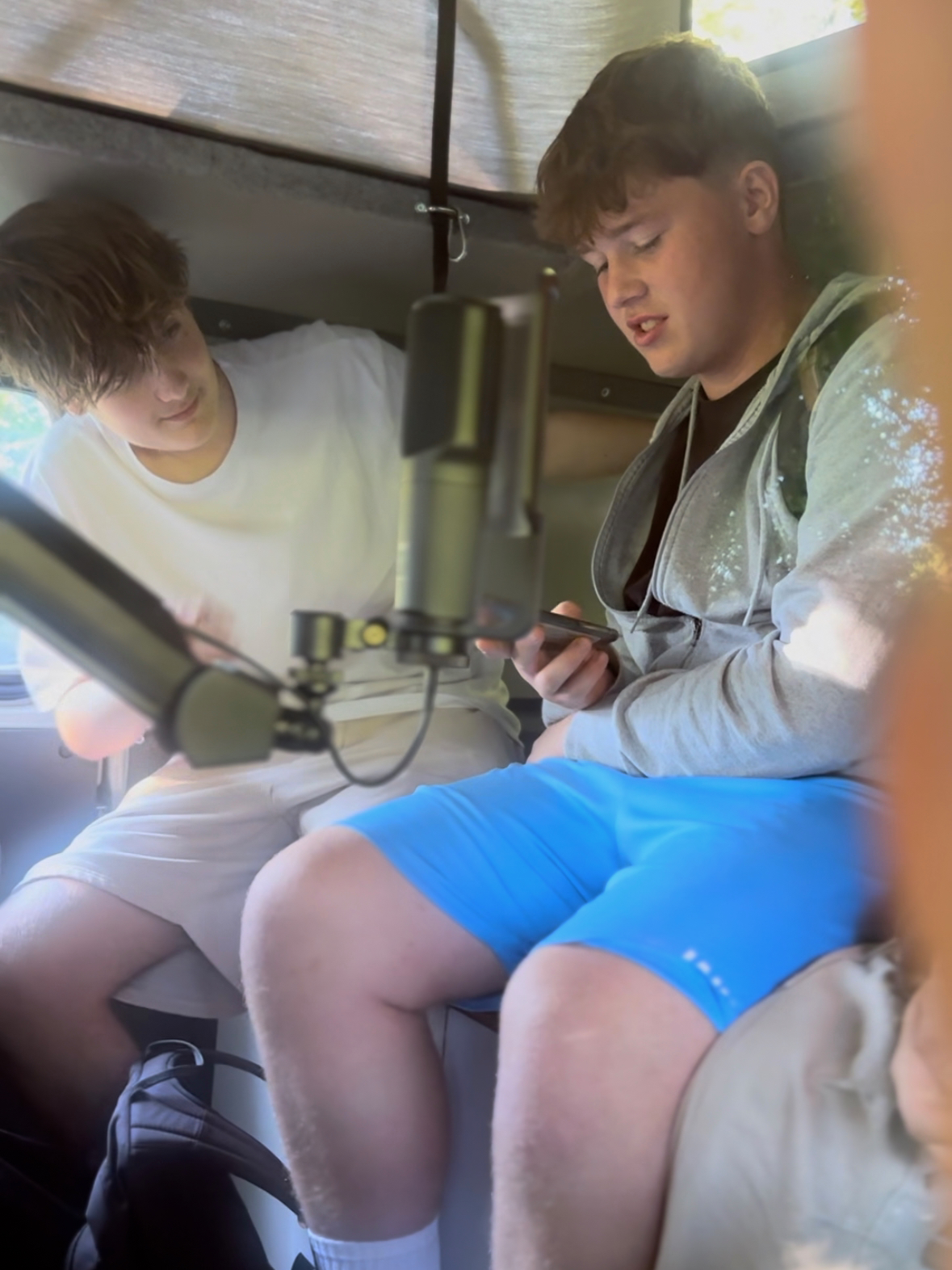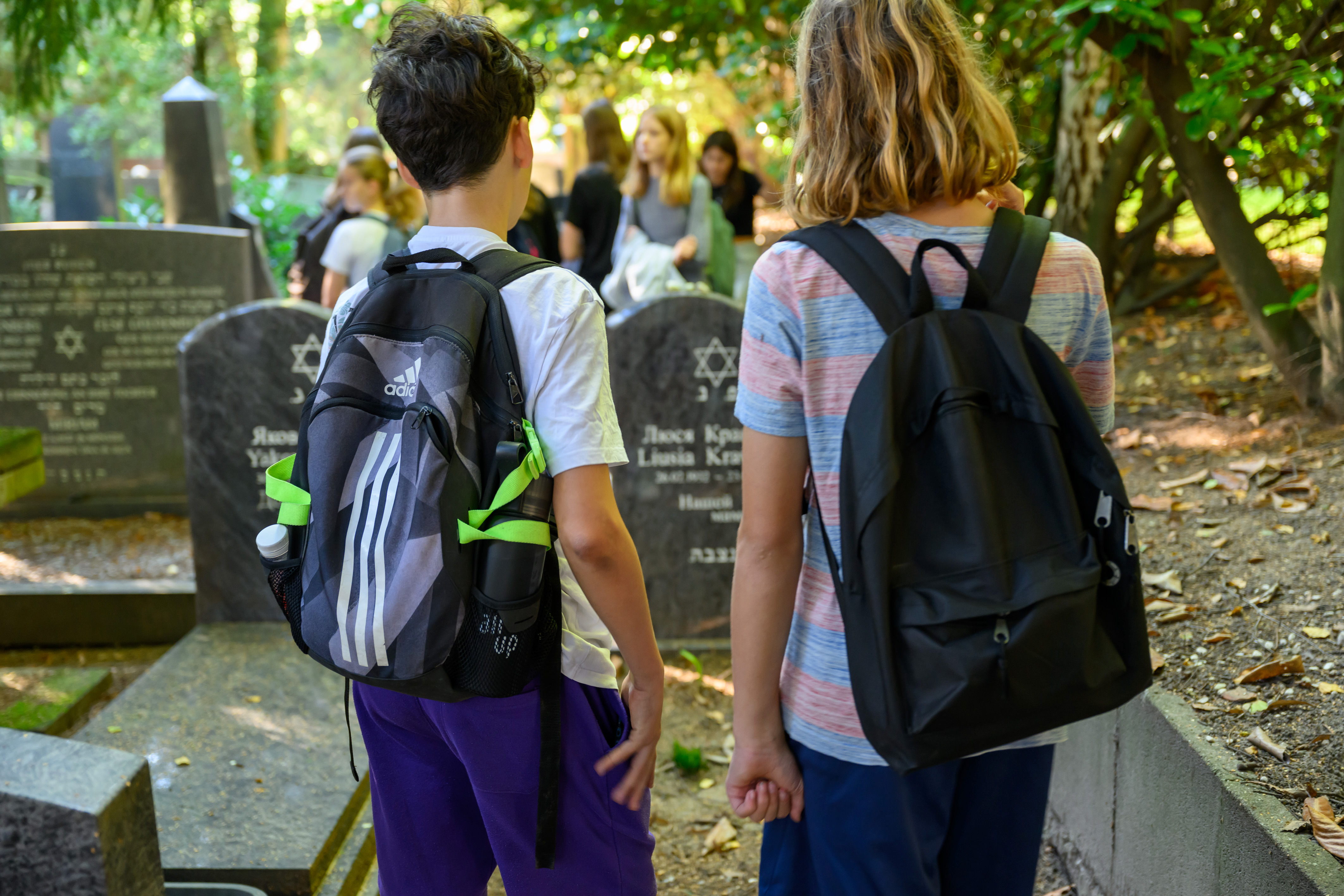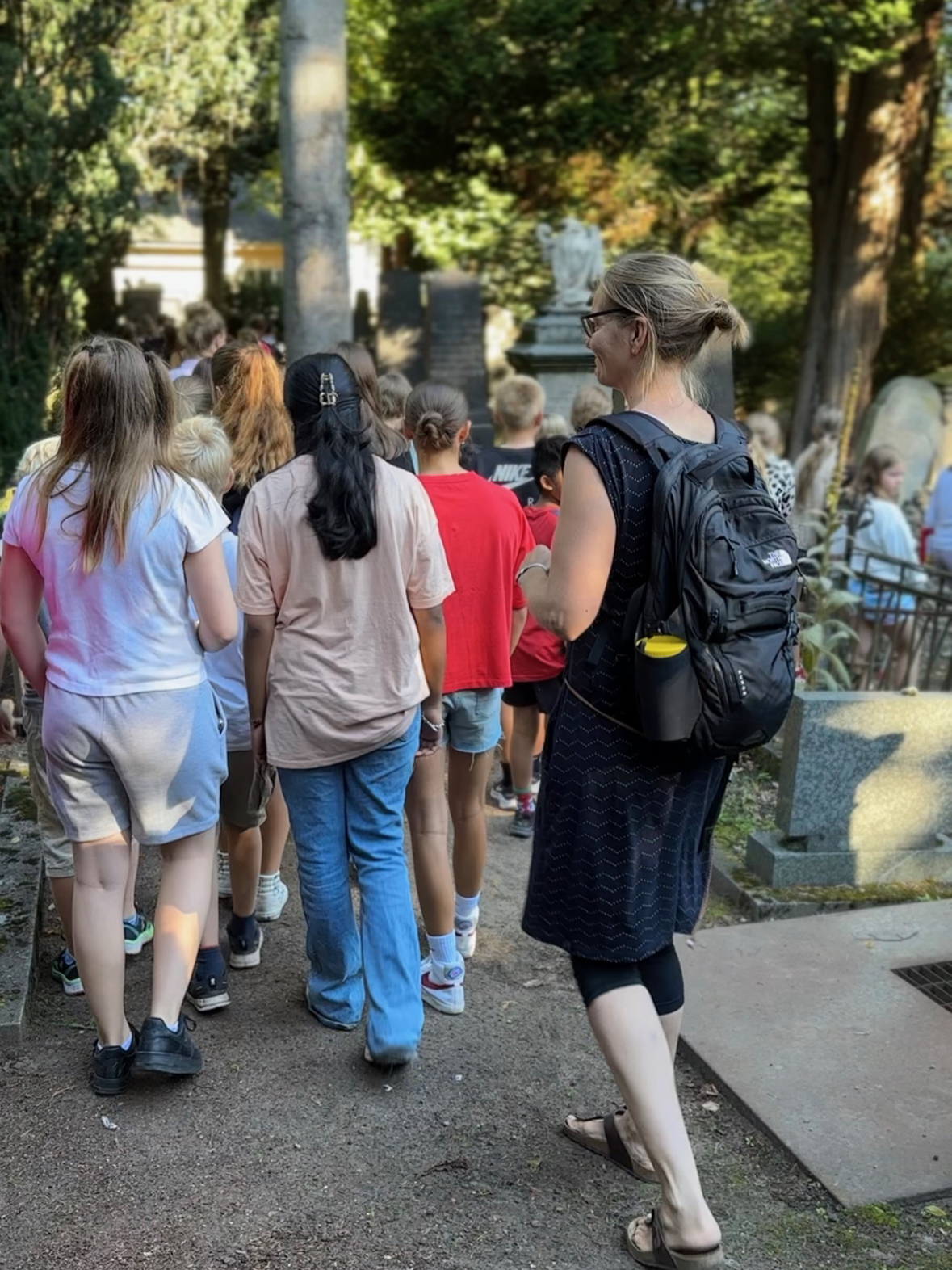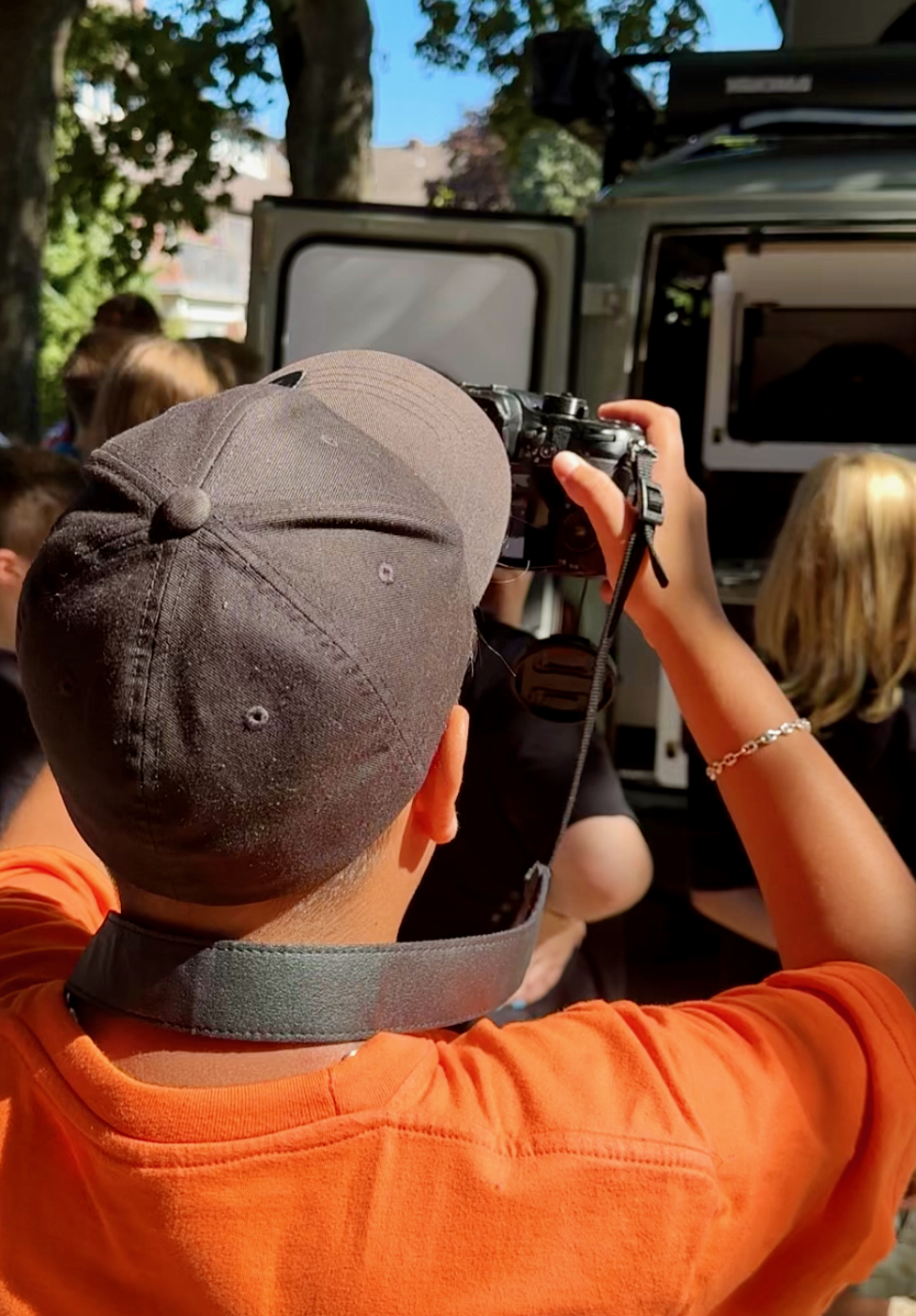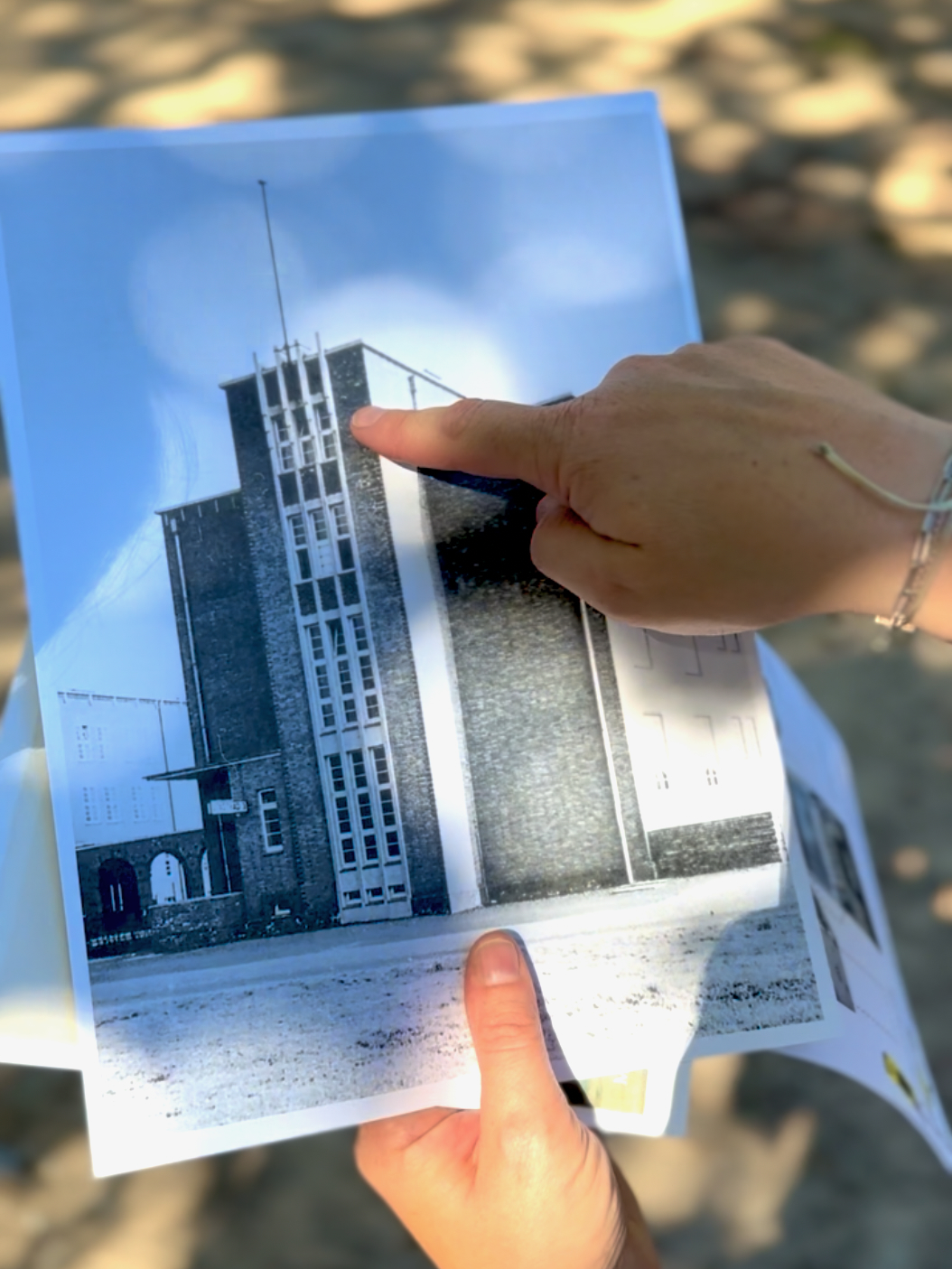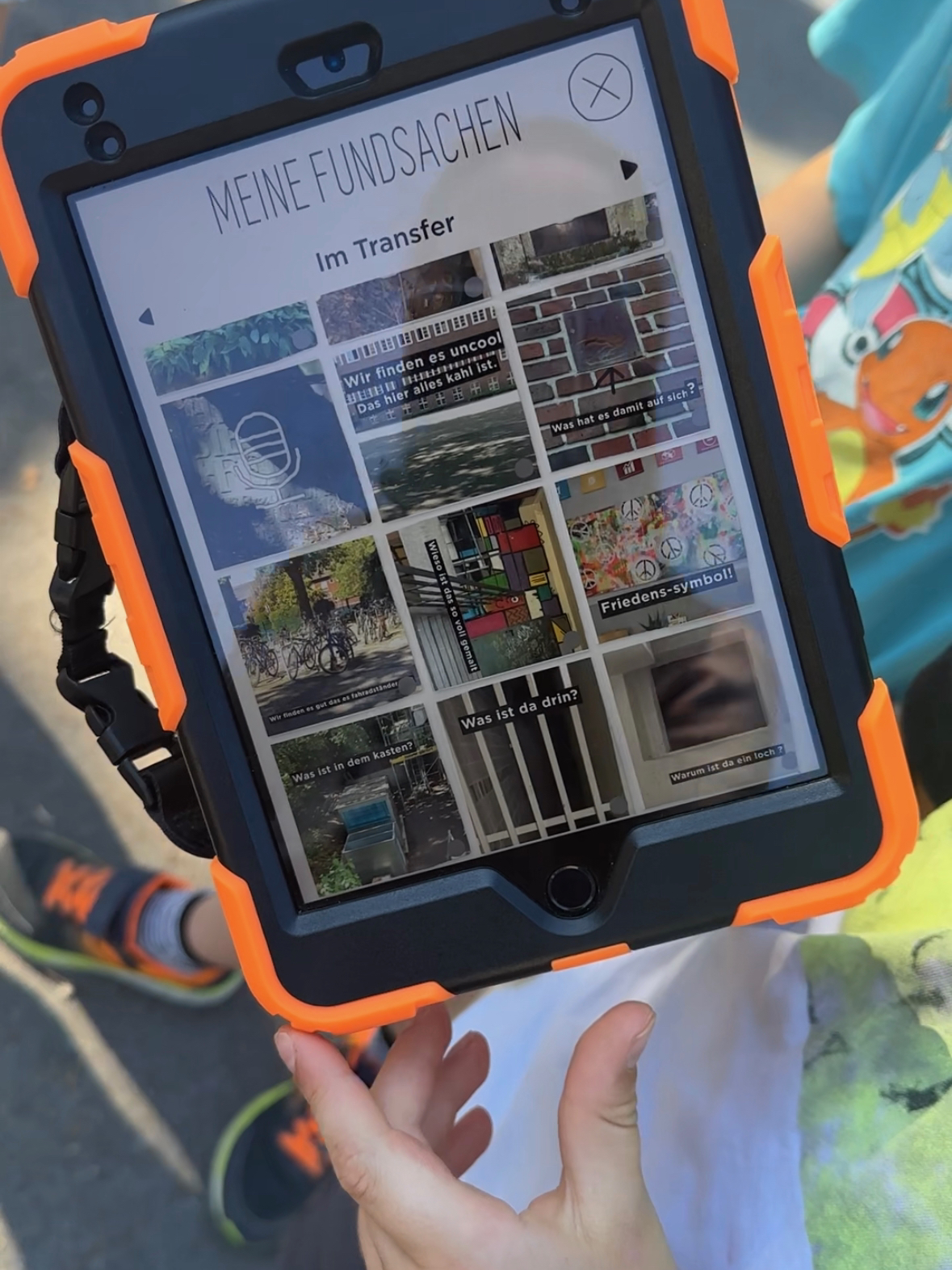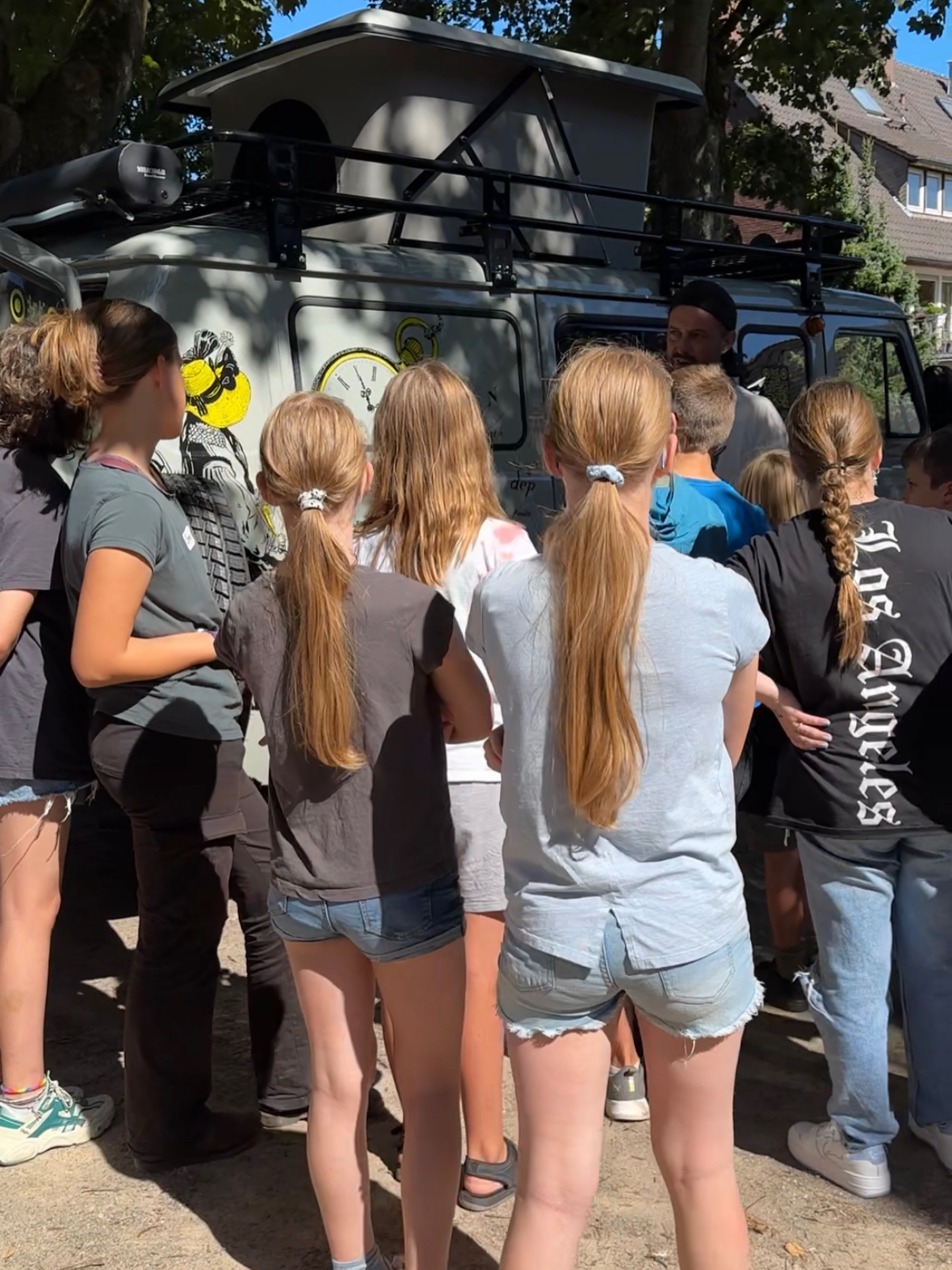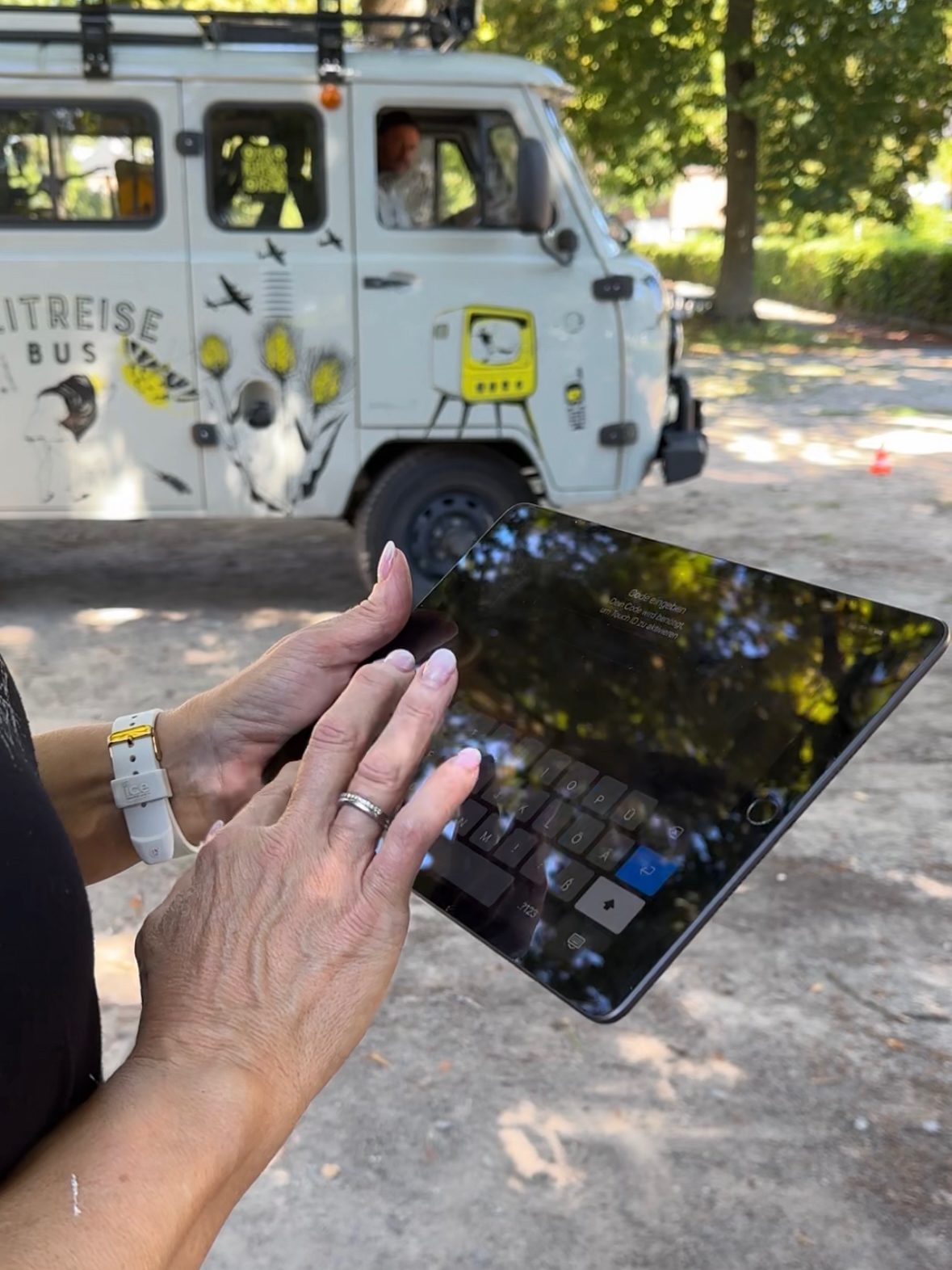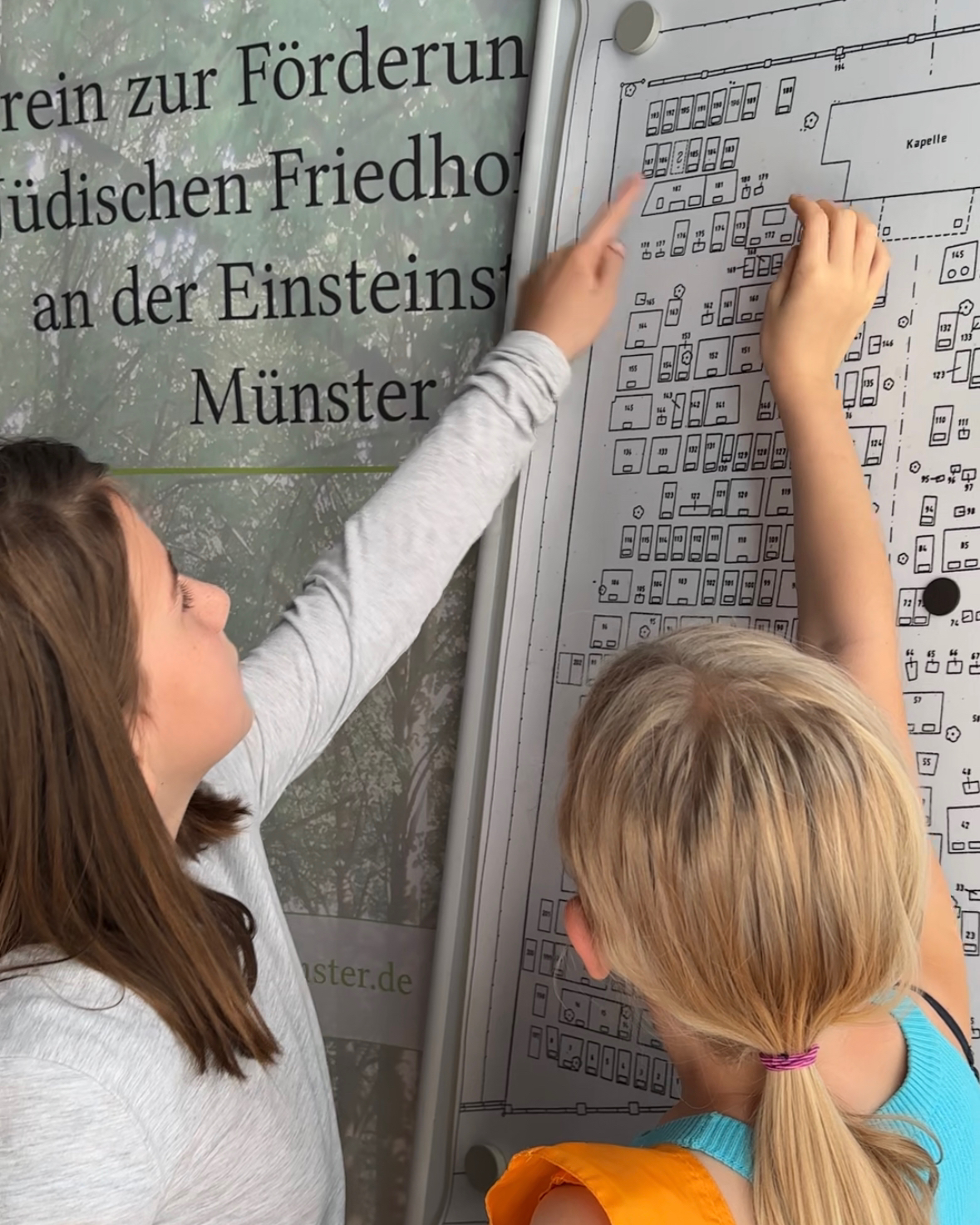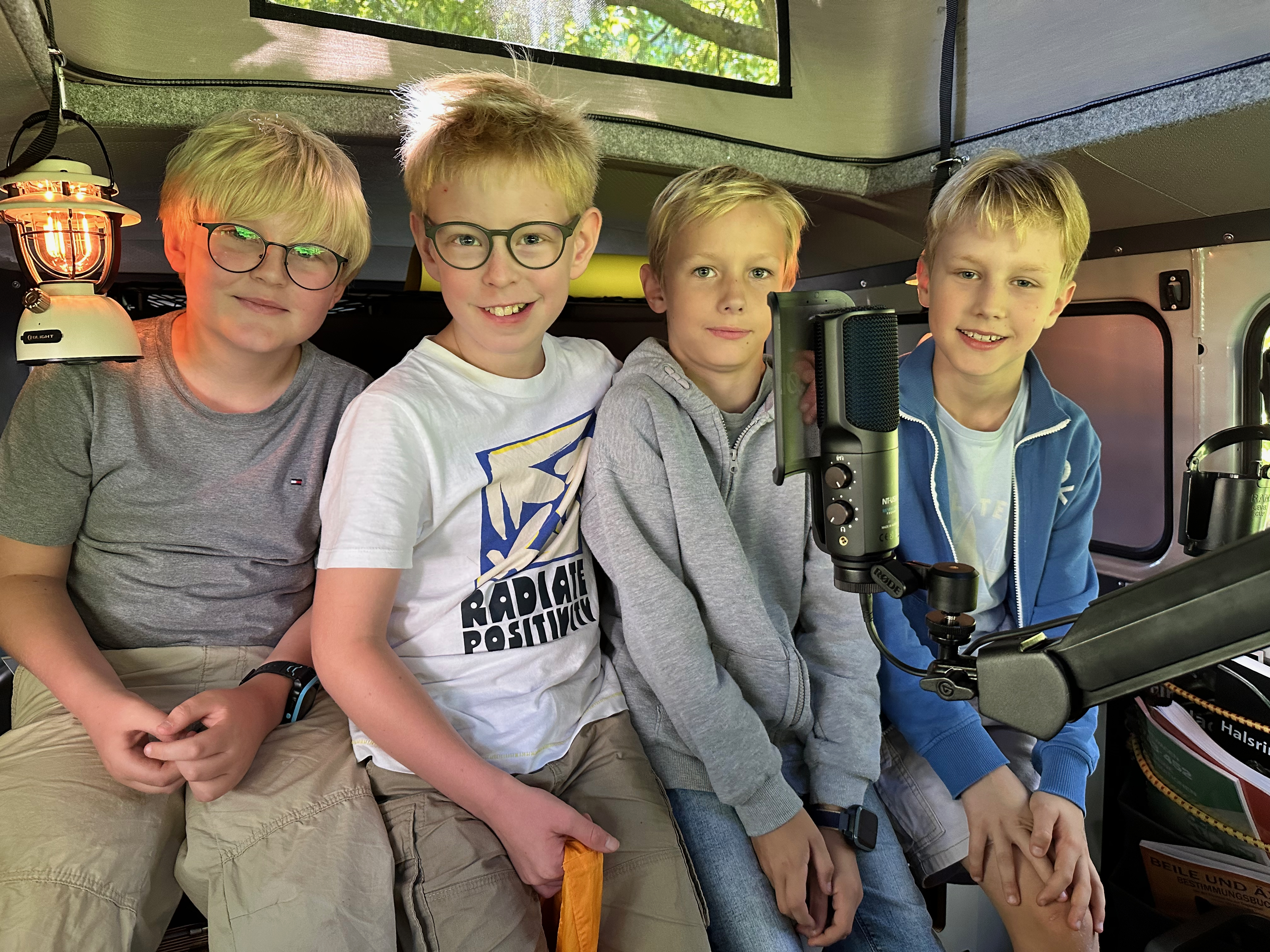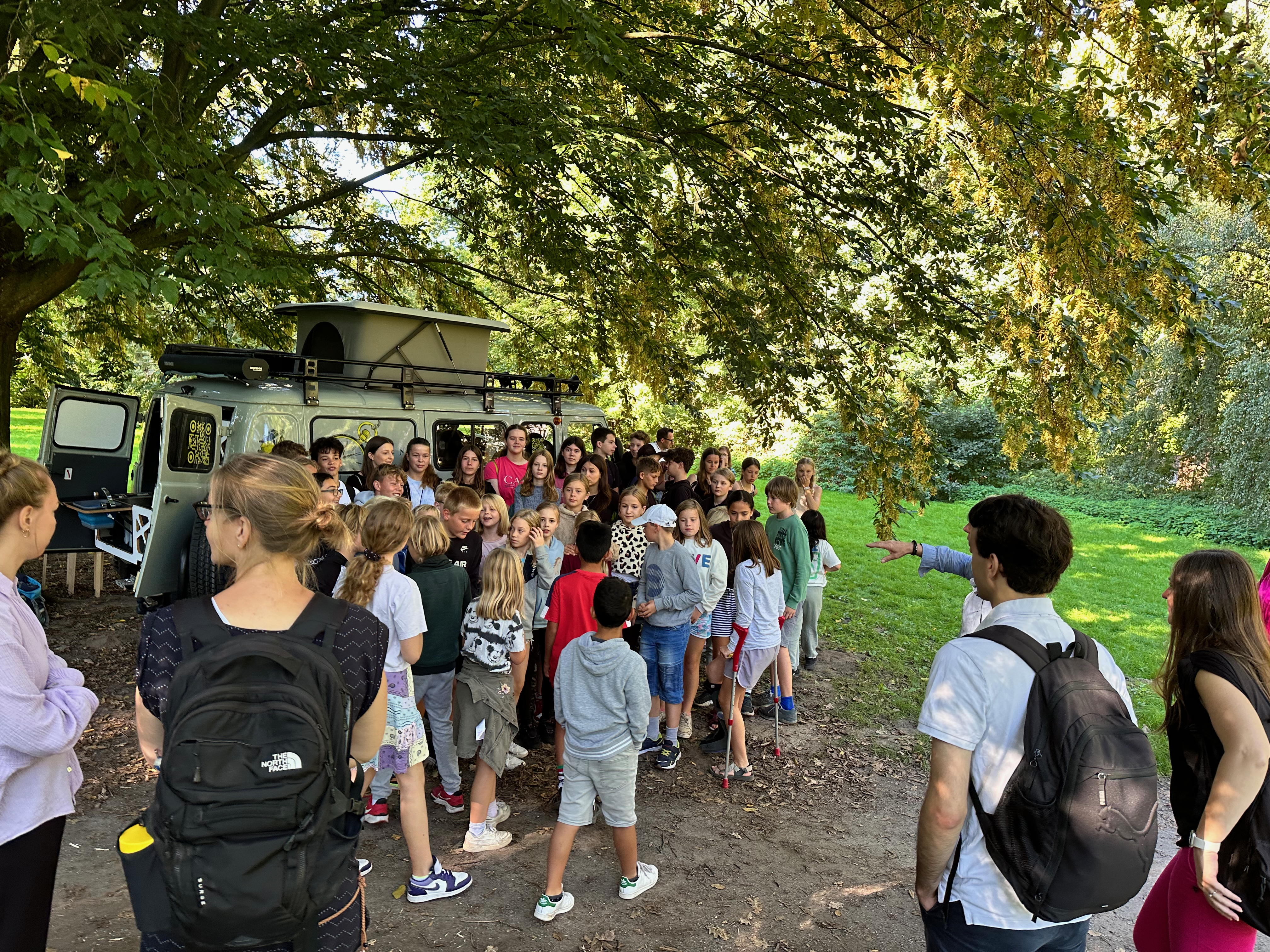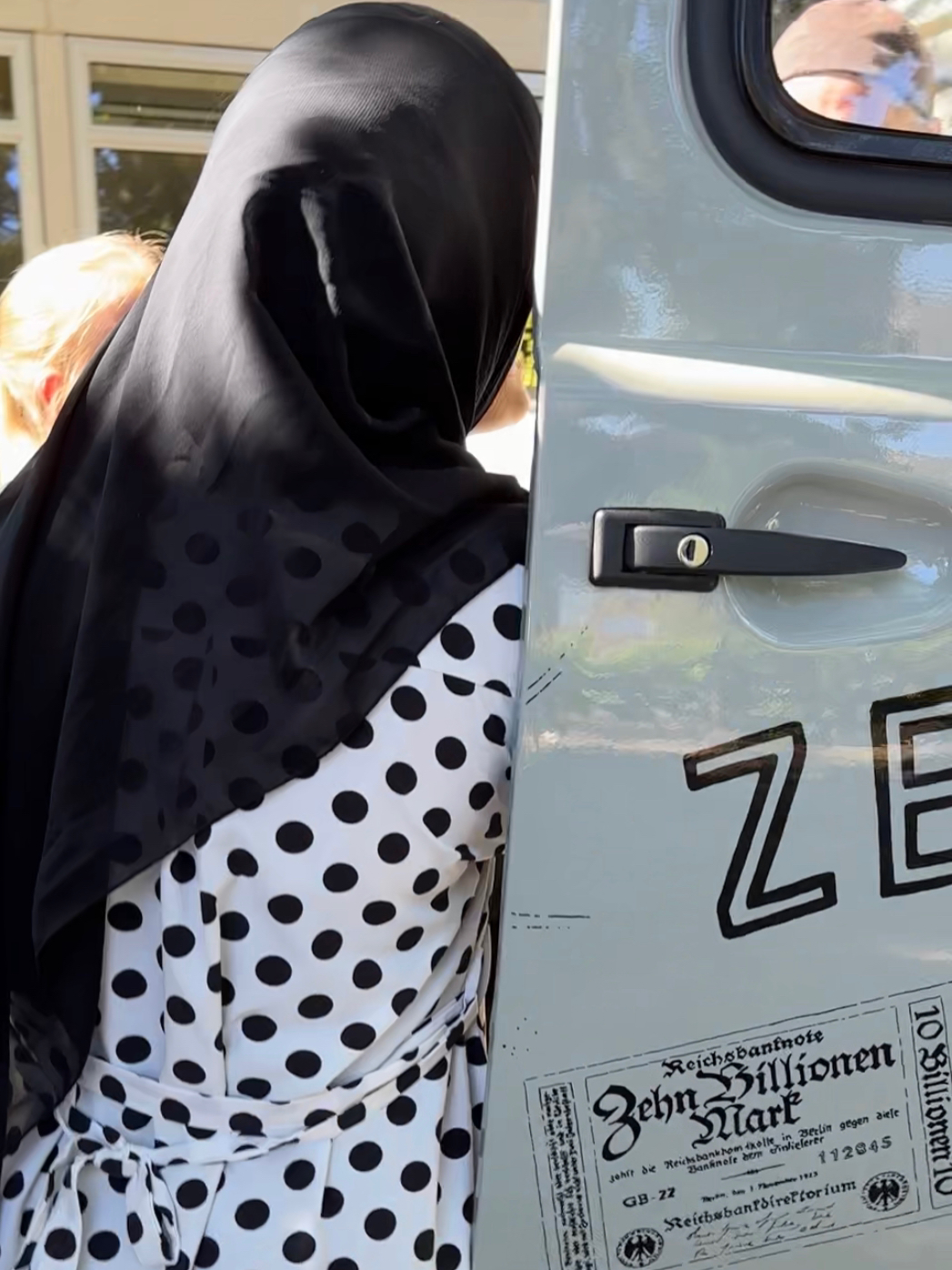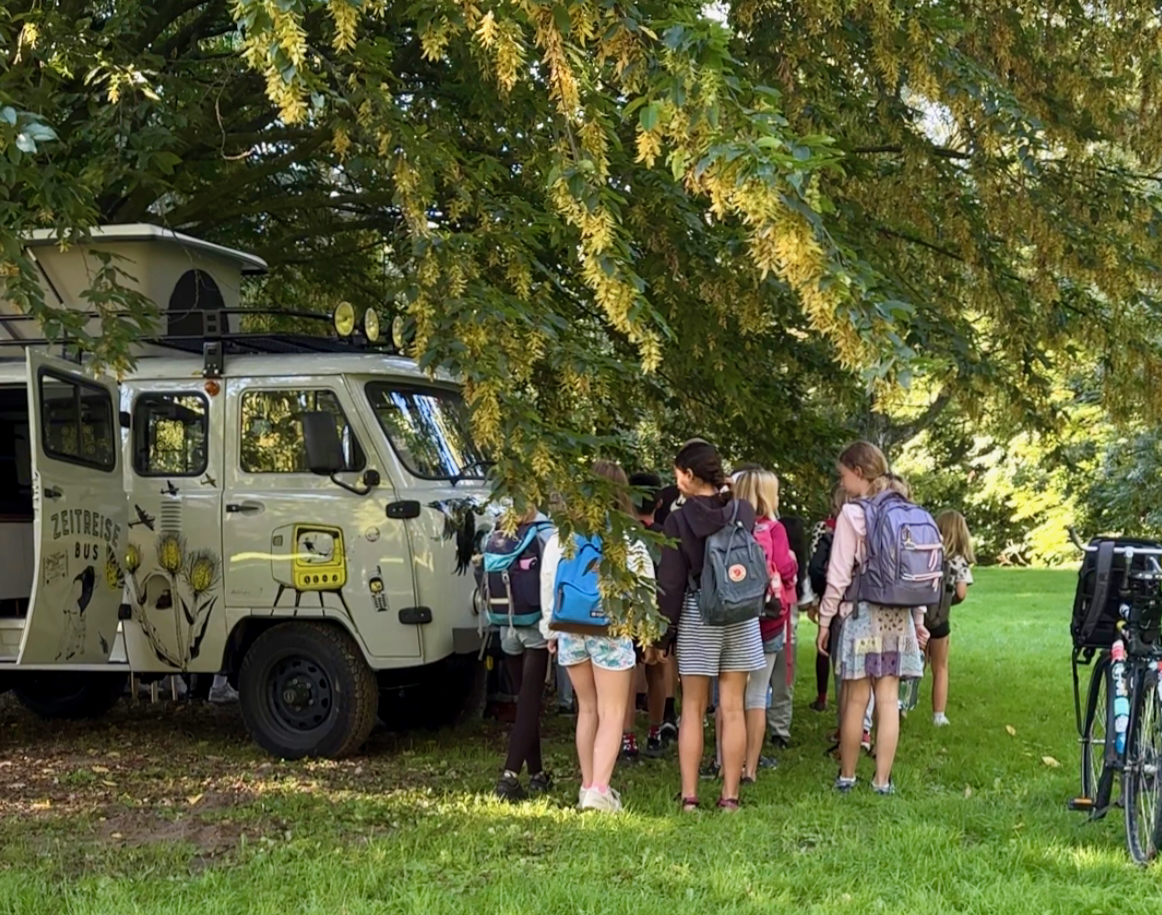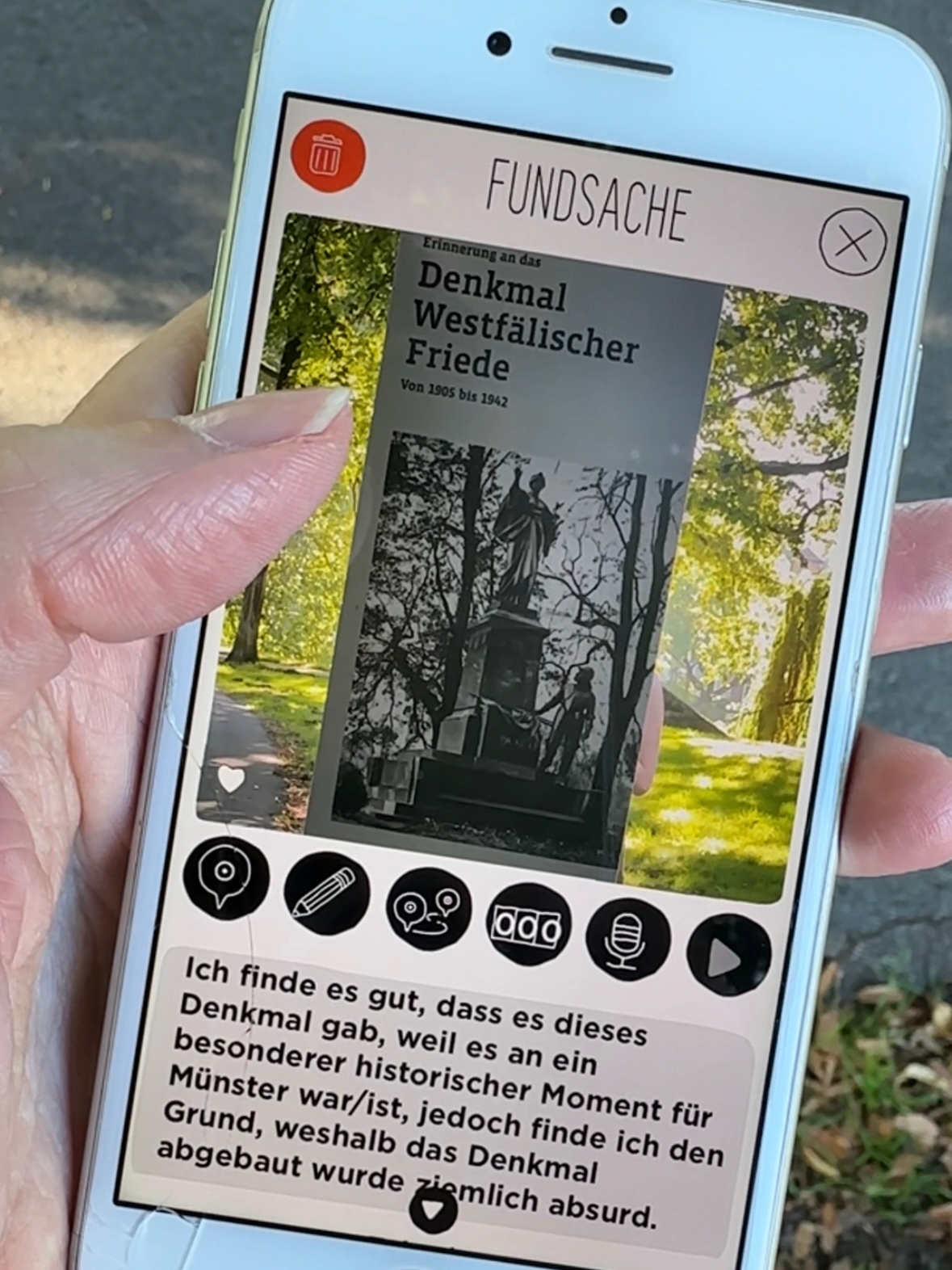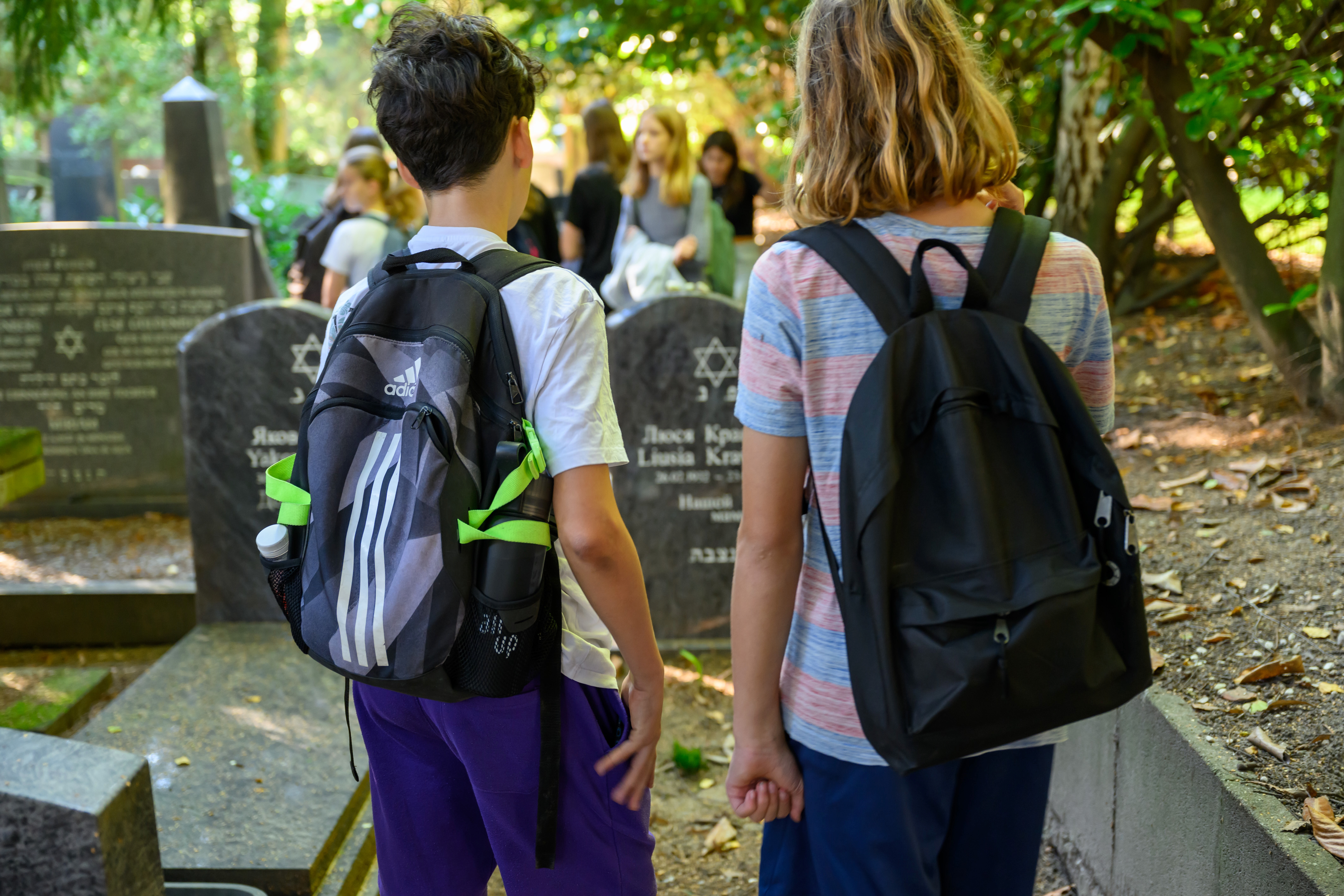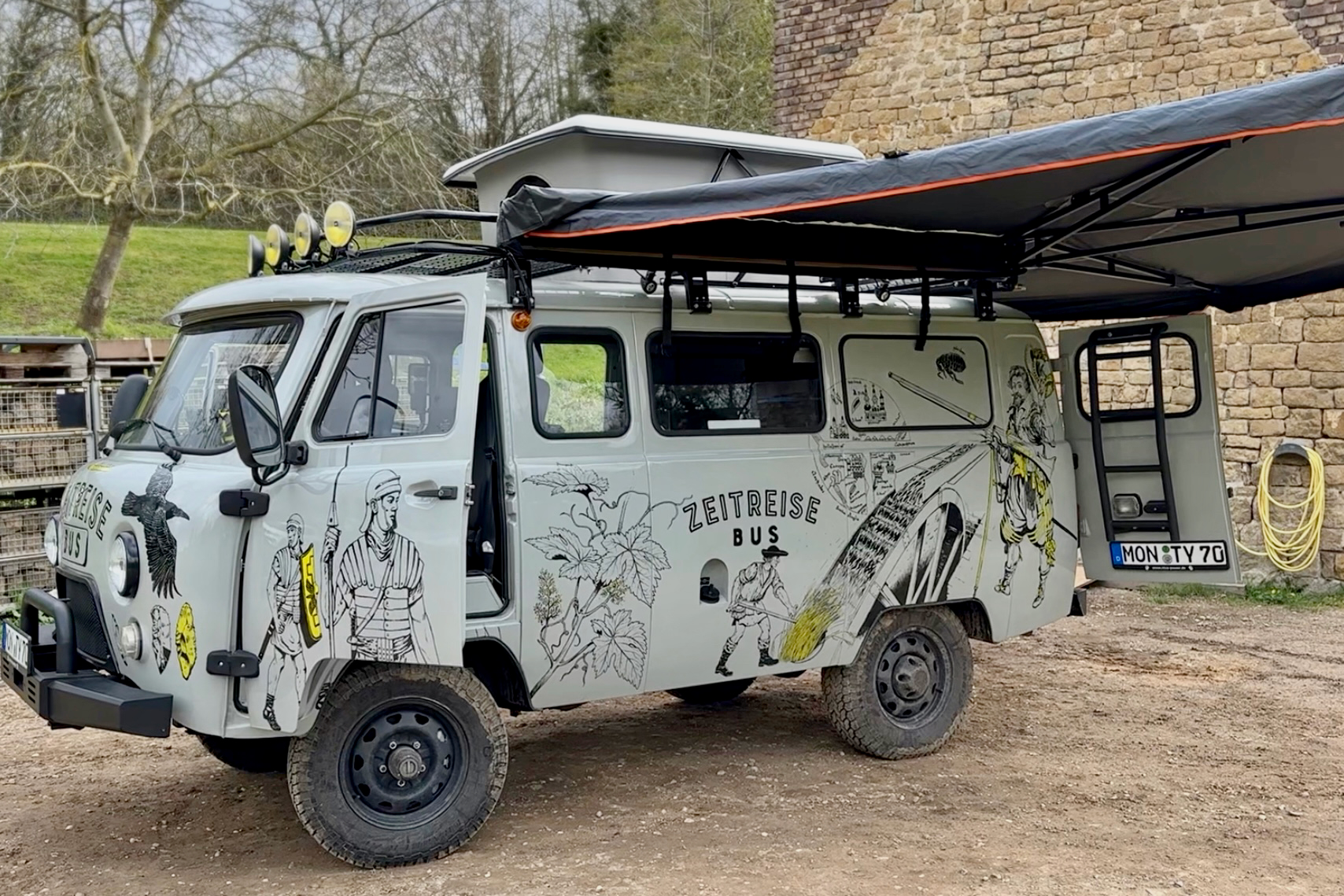Regaining a sense of belonging
TIME TRAVEL BUS (ZEITREISEBUS)
TIME TRAVEL BUS – A Rolling Cultural Heritage & Future Lab
TIME TRAVEL BUS – Where the Past Meets the Future!
The TIME TRAVEL BUS is a rolling cultural heritage & future lab that brings history to life through interactive workshops, podcasts, and hands-on experiences. Traveling to hidden historical sites, it empowers young people to explore their roots, connect with their communities, and shape a sustainable future. A unique fusion of storytelling, technology, and participatory learning—history like never before!
The TIME TRAVEL BUS is a rolling cultural heritage & future lab that brings history to life through interactive workshops, podcasts, and hands-on experiences. Traveling to hidden historical sites, it empowers young people to explore their roots, connect with their communities, and shape a sustainable future. A unique fusion of storytelling, technology, and participatory learning—history like never before!
Germany
Regional
The TIME TRAVEL BUS operates at a regional and interregional level, covering multiple locations across North Rhine-Westphalia (NRW), Germany. It connects urban and rural areas (with a focus on the Eifel region), fostering exchange between communities.
It addresses urban-rural linkages
It refers to other types of transformations (soft investment)
Yes
2024-12-31
No
No
No
As a representative of an organisation
The TIME TRAVEL BUS is a mobile cultural and educational initiative that reconnects communities with their local heritage while addressing contemporary challenges. By merging history, sustainability, and civic engagement, it fosters a deeper sense of belonging and social cohesion.
Target Groups:
⋅ Children & Young People – Engaged through interactive workshops, heritage exploration, and digital storytelling.
⋅ Local Communities – Strengthening intergenerational ties and fostering collective memory.
⋅ Educators & Cultural Institutions – Providing new educational tools and collaborative platforms.
⋅ Urban & Rural Residents – Creating meaningful exchanges between different social and geographic contexts, especially focusing on the Eifel region.
Specific Objectives:
⋅ Reviving local history as a tool for social identity and connection.
⋅ Encouraging civic engagement through participatory research and creative storytelling.
⋅ Promoting sustainability by linking historical awareness with ecological responsibility.
⋅ Fostering inclusion by making cultural education accessible to underserved regions.
Achieved Outcomes:
⋅ Hundreds of young participants involved in hands-on workshops at cultural heritage sites.
⋅ Strong regional partnerships with schools, museums, and local organizations.
⋅ A growing digital archive of podcasts and interviews documenting community history.
⋅ Cross-regional knowledge exchange, strengthening European identity through shared history.
Target Groups:
⋅ Children & Young People – Engaged through interactive workshops, heritage exploration, and digital storytelling.
⋅ Local Communities – Strengthening intergenerational ties and fostering collective memory.
⋅ Educators & Cultural Institutions – Providing new educational tools and collaborative platforms.
⋅ Urban & Rural Residents – Creating meaningful exchanges between different social and geographic contexts, especially focusing on the Eifel region.
Specific Objectives:
⋅ Reviving local history as a tool for social identity and connection.
⋅ Encouraging civic engagement through participatory research and creative storytelling.
⋅ Promoting sustainability by linking historical awareness with ecological responsibility.
⋅ Fostering inclusion by making cultural education accessible to underserved regions.
Achieved Outcomes:
⋅ Hundreds of young participants involved in hands-on workshops at cultural heritage sites.
⋅ Strong regional partnerships with schools, museums, and local organizations.
⋅ A growing digital archive of podcasts and interviews documenting community history.
⋅ Cross-regional knowledge exchange, strengthening European identity through shared history.
Heritage
Education
Sustainability
Inclusion
Community
The TIME TRAVEL BUS is designed to integrate sustainability at multiple levels, ensuring environmental awareness, resource efficiency, and long-term community engagement by linking cultural heritage preservation with ecological responsibility and fostering a deep connection between people and their surroundings.
1. Promoting Sustainable Heritage Conservation:
⋅ Raising awareness of historic buildings and sites as valuable cultural and ecological assets.
⋅ Encouraging adaptive reuse and preservation rather than demolition and waste.
⋅ Inspiring youth to develop innovative, climate-conscious restoration ideas for underutilized spaces.
2. Fostering Circular Economy & Resource Awareness:
⋅Highlighting traditional, sustainable building techniques and local materials.
⋅ Encouraging re-use and upcycling in workshops, linking the past with modern ecological needs.
Promoting waste reduction through participatory projects such as creative repurposing of historical artifacts.
3. Encouraging Eco-friendly Mobility & Learning Accessibility:
⋅ Operating as a mobile, decentralized learning hub, bringing sustainability education directly to underserved areas.
⋅ Reducing the need for long-distance travel by providing localized learning experiences.
⋅ Encouraging low-carbon tourism by highlighting heritage sites and local craftsmanship.
4. Linking History with Climate Change Awareness:
⋅ Drawing historical parallels between past climate challenges and present sustainability crises.
⋅ Exploring traditional environmental practices (e.g., historical water management, energy-efficient designs).
⋅ Encouraging youth-driven climate storytelling, connecting personal histories with future sustainability actions.
Achievements & Exemplary impact:
⋅ Partnered with conservationists and urban planners to promote adaptive reuse.
⋅ Developed open-source educational materials for lasting impact.
⋅ Strengthened rural-urban connections through integrated sustainability approaches.
1. Promoting Sustainable Heritage Conservation:
⋅ Raising awareness of historic buildings and sites as valuable cultural and ecological assets.
⋅ Encouraging adaptive reuse and preservation rather than demolition and waste.
⋅ Inspiring youth to develop innovative, climate-conscious restoration ideas for underutilized spaces.
2. Fostering Circular Economy & Resource Awareness:
⋅Highlighting traditional, sustainable building techniques and local materials.
⋅ Encouraging re-use and upcycling in workshops, linking the past with modern ecological needs.
Promoting waste reduction through participatory projects such as creative repurposing of historical artifacts.
3. Encouraging Eco-friendly Mobility & Learning Accessibility:
⋅ Operating as a mobile, decentralized learning hub, bringing sustainability education directly to underserved areas.
⋅ Reducing the need for long-distance travel by providing localized learning experiences.
⋅ Encouraging low-carbon tourism by highlighting heritage sites and local craftsmanship.
4. Linking History with Climate Change Awareness:
⋅ Drawing historical parallels between past climate challenges and present sustainability crises.
⋅ Exploring traditional environmental practices (e.g., historical water management, energy-efficient designs).
⋅ Encouraging youth-driven climate storytelling, connecting personal histories with future sustainability actions.
Achievements & Exemplary impact:
⋅ Partnered with conservationists and urban planners to promote adaptive reuse.
⋅ Developed open-source educational materials for lasting impact.
⋅ Strengthened rural-urban connections through integrated sustainability approaches.
The TIME TRAVEL BUS enhances aesthetics and cultural experience by transforming historical exploration into an immersive, participatory journey. By combining design, storytelling, and interactive formats, the project fosters a deep, personal connection to cultural heritage while making history engaging, accessible, and inspiring.
Key Objectives:
1. Creating Immersive Learning Spaces
⋅ Historical sites are used as living classrooms, where participants engage with their surroundings rather than just observing.
⋅ The bus itself serves as a mobile cultural hub, creatively designed to inspire curiosity.
2. Enhancing Cultural Identity Through Storytelling & Design
⋅ Multisensory experiences (visuals, sound, physical interaction) make heritage exploration more impactful.
⋅ Creative digital storytelling (e.g., podcasts, virtual tours) helps reinterpret history for modern audiences.
⋅ Design-driven workshops encourage participants to reshape their environments through cultural appreciation.
3. Blending Tradition with Innovation
⋅ Integration of modern design elements with historical narratives enhances engagement.
⋅ Emphasis on local craftsmanship and architectural traditions fosters appreciation for historical aesthetics.
⋅ Encouragement of artistic reinterpretation of historical sites, bridging past and future.
Achievements & Exemplary Impact:
TIME TRAVEL BUS sets a benchmark for heritage-based experiential education, proving that history is not just to be remembered—it is to be lived and reimagined.
⋅ Successful partnerships with designers and cultural institutions, ensuring authenticity and artistic excellence.
⋅ Digitally enhanced experiences (audio guides, visual reconstructions) that increase accessibility.
⋅ Sustainable heritage awareness, encouraging respect for historic architecture and traditional crafts.
Key Objectives:
1. Creating Immersive Learning Spaces
⋅ Historical sites are used as living classrooms, where participants engage with their surroundings rather than just observing.
⋅ The bus itself serves as a mobile cultural hub, creatively designed to inspire curiosity.
2. Enhancing Cultural Identity Through Storytelling & Design
⋅ Multisensory experiences (visuals, sound, physical interaction) make heritage exploration more impactful.
⋅ Creative digital storytelling (e.g., podcasts, virtual tours) helps reinterpret history for modern audiences.
⋅ Design-driven workshops encourage participants to reshape their environments through cultural appreciation.
3. Blending Tradition with Innovation
⋅ Integration of modern design elements with historical narratives enhances engagement.
⋅ Emphasis on local craftsmanship and architectural traditions fosters appreciation for historical aesthetics.
⋅ Encouragement of artistic reinterpretation of historical sites, bridging past and future.
Achievements & Exemplary Impact:
TIME TRAVEL BUS sets a benchmark for heritage-based experiential education, proving that history is not just to be remembered—it is to be lived and reimagined.
⋅ Successful partnerships with designers and cultural institutions, ensuring authenticity and artistic excellence.
⋅ Digitally enhanced experiences (audio guides, visual reconstructions) that increase accessibility.
⋅ Sustainable heritage awareness, encouraging respect for historic architecture and traditional crafts.
The TIME TRAVEL BUS is designed to be a fully inclusive and accessible cultural learning experience, ensuring that everyone, regardless of background, geography, or ability, can actively participate in cultural heritage exploration. By combining affordability, accessibility, and participatory governance, the project fosters a shared sense of belonging and community-driven learning.
Key Objectives:
1. Ensuring Accessibility & Affordability
⋅ The mobile format brings education to underserved rural areas, reducing barriers to participation.
⋅ Free or low-cost participation makes cultural heritage exploration available to students, families, and marginalized communities.
⋅ Workshops and content are designed using "Design for All" principles, making learning engaging for people of all abilities.
2. Intergenerational & Cross-Cultural Inclusion
⋅ The project creates spaces for dialogue between young people, seniors, and experts.
⋅ Collaborations with diverse cultural institutions ensure representation of different histories and perspectives.
⋅ Heritage education is linked to contemporary social issues (migration, identity, sustainability), making it relevant for diverse audiences.
3. Participatory & Community-Driven Governance
⋅ Young participants shape the content by conducting interviews, recording podcasts, and leading workshops.
⋅ Partnerships with local schools, municipalities, and grassroots organizations ensure that the project responds to real community needs.
⋅ Decision-making is bottom-up, empowering local voices rather than imposing a centralized approach.
Achievements & Exemplary Impact:
⋅ Strong partnerships with schools, heritage sites, and local communities, ensuring a wide social reach.
⋅ Adaptation of learning formats (e.g., digital storytelling, tactile materials) to cater to different abilities.
⋅ Sustainable, replicable model for mobile, community-driven cultural education across different regions.
Key Objectives:
1. Ensuring Accessibility & Affordability
⋅ The mobile format brings education to underserved rural areas, reducing barriers to participation.
⋅ Free or low-cost participation makes cultural heritage exploration available to students, families, and marginalized communities.
⋅ Workshops and content are designed using "Design for All" principles, making learning engaging for people of all abilities.
2. Intergenerational & Cross-Cultural Inclusion
⋅ The project creates spaces for dialogue between young people, seniors, and experts.
⋅ Collaborations with diverse cultural institutions ensure representation of different histories and perspectives.
⋅ Heritage education is linked to contemporary social issues (migration, identity, sustainability), making it relevant for diverse audiences.
3. Participatory & Community-Driven Governance
⋅ Young participants shape the content by conducting interviews, recording podcasts, and leading workshops.
⋅ Partnerships with local schools, municipalities, and grassroots organizations ensure that the project responds to real community needs.
⋅ Decision-making is bottom-up, empowering local voices rather than imposing a centralized approach.
Achievements & Exemplary Impact:
⋅ Strong partnerships with schools, heritage sites, and local communities, ensuring a wide social reach.
⋅ Adaptation of learning formats (e.g., digital storytelling, tactile materials) to cater to different abilities.
⋅ Sustainable, replicable model for mobile, community-driven cultural education across different regions.
The TIME TRAVEL BUS thrives on direct citizen participation, ensuring that the people benefiting from the project also actively shape its direction and content. The project is built on a bottom-up approach, where civil society, local communities, and young participants play a crucial role in decision-making, storytelling, and implementation. It is created with and by the community, making it a powerful, people-centered model for cultural engagement and social transformation.
⋅ Participants co-create content by conducting oral history interviews, recording podcasts, and documenting historical sites.
⋅ They propose new ideas for using historical buildings and spaces, integrating modern sustainability approaches.
⋅ The project promotes civic engagement, encouraging young people to see themselves as cultural ambassadors.
⋅ Residents, elders, and local experts provide firsthand historical knowledge and engage in intergenerational learning.
⋅ Communities contribute historical documents, photos, and personal stories, making the project a living archive of shared heritage.
⋅ The project strengthens social cohesion by bringing together different generations and backgrounds.
⋅ Schools, museums, and heritage organizations co-design the learning curriculum, ensuring diverse and accurate historical perspectives.
⋅ Municipalities and cultural groups support outreach and accessibility, ensuring that the program is widely available.
Impact of Citizen Involvement on the Project:
⋅ Authenticity & Relevance: The project reflects real local history and lived experiences, making it meaningful and culturally grounded.
⋅ Sustainability & Ownership: By involving citizens, the TIME TRAVEL BUS fosters a sense of collective responsibility, ensuring long-term engagement beyond the initial project scope.
⋅ Scalability & Adaptability: Community-driven insights allow the project to be replicated in new regions, tailoring it to different historical and cultural contexts.
⋅ Participants co-create content by conducting oral history interviews, recording podcasts, and documenting historical sites.
⋅ They propose new ideas for using historical buildings and spaces, integrating modern sustainability approaches.
⋅ The project promotes civic engagement, encouraging young people to see themselves as cultural ambassadors.
⋅ Residents, elders, and local experts provide firsthand historical knowledge and engage in intergenerational learning.
⋅ Communities contribute historical documents, photos, and personal stories, making the project a living archive of shared heritage.
⋅ The project strengthens social cohesion by bringing together different generations and backgrounds.
⋅ Schools, museums, and heritage organizations co-design the learning curriculum, ensuring diverse and accurate historical perspectives.
⋅ Municipalities and cultural groups support outreach and accessibility, ensuring that the program is widely available.
Impact of Citizen Involvement on the Project:
⋅ Authenticity & Relevance: The project reflects real local history and lived experiences, making it meaningful and culturally grounded.
⋅ Sustainability & Ownership: By involving citizens, the TIME TRAVEL BUS fosters a sense of collective responsibility, ensuring long-term engagement beyond the initial project scope.
⋅ Scalability & Adaptability: Community-driven insights allow the project to be replicated in new regions, tailoring it to different historical and cultural contexts.
The TIME TRAVEL BUS is a multi-level initiative that brings together stakeholders from local, regional, national levels. Each contributes expertise, resources, and outreach, ensuring the project’s sustainability, relevance, and impact. By bridging multiple levels of engagement, the TIME TRAVEL BUS serves as a scalable, collaborative model for participatory heritage education that inspires communities and informs future European cultural initiatives.
Local Level – Community Engagement & Cultural Institutions
⋅ Schools & Youth Groups actively co-develop educational content and engage students in participatory learning.
⋅ Local Museums, Archives & Heritage Sites provide historical expertise, artifacts, and locations for interactive learning experiences.
⋅ Municipalities & Grassroots Organizations support logistics, funding applications, and facilitate connections with local networks.
Regional Level – Educational & Cultural Networks
⋅ State Heritage Conservation Offices (e.g., LVR Archaeology & Denkmalpflege) offer expert guidance on sustainable heritage practices.
⋅ Regional Cultural & Nature Organizations help integrate environmental sustainability and cultural tourism into the project.
⋅ Universities & Research Institutions contribute scientific insights and research collaborations to strengthen educational impact.
National Level – Policy & Institutional Support
⋅ Media & Digital Platforms help scale the project through public awareness campaigns and digital storytelling initiatives.
Added Value´:
⋅ Authenticity & Expertise: Access to local historical knowledge, research insights, and policy frameworks strengthens the project’s credibility.
⋅ Sustainability & Scalability: Collaboration with regional and national partners ensures long-term viability and adaptability.
⋅ Cross-sector Innovation: By involving heritage, education, sustainability, and civic engagement sectors, the project fosters interdisciplinary solutions.
Local Level – Community Engagement & Cultural Institutions
⋅ Schools & Youth Groups actively co-develop educational content and engage students in participatory learning.
⋅ Local Museums, Archives & Heritage Sites provide historical expertise, artifacts, and locations for interactive learning experiences.
⋅ Municipalities & Grassroots Organizations support logistics, funding applications, and facilitate connections with local networks.
Regional Level – Educational & Cultural Networks
⋅ State Heritage Conservation Offices (e.g., LVR Archaeology & Denkmalpflege) offer expert guidance on sustainable heritage practices.
⋅ Regional Cultural & Nature Organizations help integrate environmental sustainability and cultural tourism into the project.
⋅ Universities & Research Institutions contribute scientific insights and research collaborations to strengthen educational impact.
National Level – Policy & Institutional Support
⋅ Media & Digital Platforms help scale the project through public awareness campaigns and digital storytelling initiatives.
Added Value´:
⋅ Authenticity & Expertise: Access to local historical knowledge, research insights, and policy frameworks strengthens the project’s credibility.
⋅ Sustainability & Scalability: Collaboration with regional and national partners ensures long-term viability and adaptability.
⋅ Cross-sector Innovation: By involving heritage, education, sustainability, and civic engagement sectors, the project fosters interdisciplinary solutions.
The TIME TRAVEL BUS is an interdisciplinary project that blends heritage, education, sustainability, design, digital media, and community engagement. A key aspect is its unique bus design, which functions as both a mobile podcast studio and research lab, visually and spatially crafted to foster interaction, exploration, and storytelling. By combining innovative design, participatory learning, and multi-disciplinary collaboration, the TIME TRAVEL BUS is more than a project—it is an experience, a moving space of inquiry, creativity, and discovery.
⋅ Historians, archaeologists, and archivists provide expertise on historical sites, artifacts, and oral histories.
⋅ Local museums and archives contribute authentic narratives and offer spaces for interactive learning.
⋅ The learning model is question-driven, meaning that the process begins with participants' curiosity, rather than predefined expert knowledge.
⋅ The bus’s exterior and interior design are key components of its impact. Illustrations, modular elements, and flexible setups allow it to transform into a storytelling space, recording studio, and research hub.
⋅ The mobile podcast studio and multimedia setup enable participants to document their findings, create stories, and amplify local narratives.
⋅ The project is co-created with communities, ensuring that the learning experience is locally relevant and empowering.
⋅ Experts act as facilitators rather than lecturers, making space for diverse perspectives and self-directed discovery.
Interdisciplinary Collaboration & Added Value:
⋅ The project does not begin with expert lectures but with the questions and interests of participants, creating a highly engaging, exploratory approach.
⋅ The bus itself is a learning tool, turning history, sustainability, and technology into an interactive, mobile experience.
⋅ The model can be transferred to other regions and cultural contexts, serving as a blueprint for mobile, interdisciplinary education.
⋅ Historians, archaeologists, and archivists provide expertise on historical sites, artifacts, and oral histories.
⋅ Local museums and archives contribute authentic narratives and offer spaces for interactive learning.
⋅ The learning model is question-driven, meaning that the process begins with participants' curiosity, rather than predefined expert knowledge.
⋅ The bus’s exterior and interior design are key components of its impact. Illustrations, modular elements, and flexible setups allow it to transform into a storytelling space, recording studio, and research hub.
⋅ The mobile podcast studio and multimedia setup enable participants to document their findings, create stories, and amplify local narratives.
⋅ The project is co-created with communities, ensuring that the learning experience is locally relevant and empowering.
⋅ Experts act as facilitators rather than lecturers, making space for diverse perspectives and self-directed discovery.
Interdisciplinary Collaboration & Added Value:
⋅ The project does not begin with expert lectures but with the questions and interests of participants, creating a highly engaging, exploratory approach.
⋅ The bus itself is a learning tool, turning history, sustainability, and technology into an interactive, mobile experience.
⋅ The model can be transferred to other regions and cultural contexts, serving as a blueprint for mobile, interdisciplinary education.
The TIME TRAVEL BUS redefines cultural education by combining mobility, participatory learning, immersive design, and digital storytelling—a stark contrast to traditional, static heritage education models. Unlike mainstream heritage education, which often remains passive, exclusive, or location-bound, the TIME TRAVEL BUS blurs the lines between learning, participation, and place-making. It is a living, moving, evolving learning space—where history, sustainability, and community engagement merge to shape the future.
⋅ The bus itself is a learning space, functioning as a podcast studio, research lab, and cultural hub. It travels to urban and rural areas, making high-quality educational experiences accessible to underserved communities.
Instead of bringing students to museums, the museum comes to the people, ensuring inclusive, place-based learning.
⋅ The process starts with participants' questions, not expert lectures—curiosity drives the learning experience. Young people become active researchers and storytellers, creating podcasts, digital archives, and future visions for their communities.
⋅ Experts act as facilitators, not instructors, shifting from knowledge transfer to knowledge co-creation.
⋅ The bus's exterior and interior design turn it into an interactive, inspiring space, making learning feel like an adventure.
⋅ The integration of research, history, and sustainability in a single mobile platform is unparalleled in the field.
⋅ The project doesn’t just teach history—it connects it to modern challenges like climate change, urban transformation, and community resilience.
⋅ Digital storytelling (podcasts, videos, and interactive formats) makes cultural education more accessible and engaging than traditional textbooks or museum exhibits.
⋅ The bus is a testbed for new formats in heritage education, proving that history does not belong in archives alone but in everyday life.
⋅ The bus itself is a learning space, functioning as a podcast studio, research lab, and cultural hub. It travels to urban and rural areas, making high-quality educational experiences accessible to underserved communities.
Instead of bringing students to museums, the museum comes to the people, ensuring inclusive, place-based learning.
⋅ The process starts with participants' questions, not expert lectures—curiosity drives the learning experience. Young people become active researchers and storytellers, creating podcasts, digital archives, and future visions for their communities.
⋅ Experts act as facilitators, not instructors, shifting from knowledge transfer to knowledge co-creation.
⋅ The bus's exterior and interior design turn it into an interactive, inspiring space, making learning feel like an adventure.
⋅ The integration of research, history, and sustainability in a single mobile platform is unparalleled in the field.
⋅ The project doesn’t just teach history—it connects it to modern challenges like climate change, urban transformation, and community resilience.
⋅ Digital storytelling (podcasts, videos, and interactive formats) makes cultural education more accessible and engaging than traditional textbooks or museum exhibits.
⋅ The bus is a testbed for new formats in heritage education, proving that history does not belong in archives alone but in everyday life.
The TIME TRAVEL BUS follows a highly participatory, process-driven, and interdisciplinary approach that prioritizes co-creation, mobility, and experiential learning. Unlike traditional heritage education, which often starts with expert knowledge, this project begins with the questions of participants, making learning more engaging, inclusive, and relevant. Instead of simply teaching history, the TIME TRAVEL BUS activates local heritage, empowers citizens, and connects history to contemporary issues. The combination of mobility, participatory learning, and digital storytelling makes this an exemplary model for rethinking heritage education in Europe.
⋅ The process starts not with predefined knowledge but with the curiosity of participants—children, young people, and local communities.
⋅ Instead of traditional lectures, workshops are structured around open-ended questions that emerge from participants' perspectives.
⋅ Each location visited becomes a classroom, where participants explore local history, sustainability, and social issues through hands-on activities.
⋅ By reaching rural and underserved areas, the project ensures heritage education is inclusive and accessible.
⋅ The bus’s visual storytelling and flexible interior create an interactive space where learning feels natural and engaging.
⋅ Participants document their experiences through digital media, using podcasts, video storytelling, and creative mapping to share their insights.
⋅ The integration of physical, visual, and auditory learning methods ensures that different learning styles are supported.
⋅ Young participants are not passive learners but co-researchers, contributing to local knowledge production.
⋅ Workshops empower communities to document their own stories, shaping public memory and strengthening civic engagement.
⋅ The participatory process creates a long-lasting impact, as communities remain involved in preserving and reinterpreting their heritage.
⋅ The process starts not with predefined knowledge but with the curiosity of participants—children, young people, and local communities.
⋅ Instead of traditional lectures, workshops are structured around open-ended questions that emerge from participants' perspectives.
⋅ Each location visited becomes a classroom, where participants explore local history, sustainability, and social issues through hands-on activities.
⋅ By reaching rural and underserved areas, the project ensures heritage education is inclusive and accessible.
⋅ The bus’s visual storytelling and flexible interior create an interactive space where learning feels natural and engaging.
⋅ Participants document their experiences through digital media, using podcasts, video storytelling, and creative mapping to share their insights.
⋅ The integration of physical, visual, and auditory learning methods ensures that different learning styles are supported.
⋅ Young participants are not passive learners but co-researchers, contributing to local knowledge production.
⋅ Workshops empower communities to document their own stories, shaping public memory and strengthening civic engagement.
⋅ The participatory process creates a long-lasting impact, as communities remain involved in preserving and reinterpreting their heritage.
The TIME TRAVEL BUS is designed as a scalable and adaptable model that can be replicated in different regions, cultural contexts, and educational settings. Its modular approach, mobile format, and participatory methodology make it highly transferable to other places, groups of beneficiaries, and thematic focuses. It is not just a project – it is a methodology, a tool, and a platform for democratic, mobile, and participatory education, making history, culture, and sustainability accessible to all.
⋅ The concept of a traveling educational and cultural space can be replicated in other regions, countries, or social contexts, addressing local heritage, sustainability, or social cohesion.
⋅ The bus model could be adapted for different themes, such as migration history, urban transformation, or environmental justice.
⋅ Its low-threshold accessibility makes it a powerful tool for reaching rural, marginalized, or underrepresented communities.
⋅ The bottom-up, participant-led approach can be applied to other fields, such as science education, climate activism, or public health awareness.
⋅ The focus on community-driven storytelling and local engagement ensures relevance in diverse social and geographical contexts.
⋅ The co-creation process, where participants shape the learning experience, can be adapted by schools, cultural institutions, or civic initiatives.
⋅ The podcast studio and multimedia documentation can be easily replicated in different projects, allowing communities to record and share their own stories.
⋅ Low-Cost Adaptation: The project does not require high-tech infrastructure, making it feasible for regions with limited resources.
⋅ Scalability: The concept can be expanded from one bus to multiple mobile units covering larger geographical areas.
⋅ The concept of a traveling educational and cultural space can be replicated in other regions, countries, or social contexts, addressing local heritage, sustainability, or social cohesion.
⋅ The bus model could be adapted for different themes, such as migration history, urban transformation, or environmental justice.
⋅ Its low-threshold accessibility makes it a powerful tool for reaching rural, marginalized, or underrepresented communities.
⋅ The bottom-up, participant-led approach can be applied to other fields, such as science education, climate activism, or public health awareness.
⋅ The focus on community-driven storytelling and local engagement ensures relevance in diverse social and geographical contexts.
⋅ The co-creation process, where participants shape the learning experience, can be adapted by schools, cultural institutions, or civic initiatives.
⋅ The podcast studio and multimedia documentation can be easily replicated in different projects, allowing communities to record and share their own stories.
⋅ Low-Cost Adaptation: The project does not require high-tech infrastructure, making it feasible for regions with limited resources.
⋅ Scalability: The concept can be expanded from one bus to multiple mobile units covering larger geographical areas.
The TIME TRAVEL BUS tackles pressing global challenges such as social cohesion, identity loss, migration, and sustainability by offering localized, community-driven solutions. It provides a space where people—especially refugees, newcomers, and marginalized groups—can connect with their surroundings, understand their new home more deeply, and build bridges between their past and present. It is a tool for social transformation, identity-building, and cultural empowerment in an ever-changing world.
⋅ Migration and urbanization often disconnect people from cultural heritage and a sense of belonging.
⋅ The project enables refugees, newcomers, and long-term residents to explore local history together, creating new shared narratives.
⋅ Through storytelling, site visits, and participatory research, individuals can connect their own histories with those of their new communities, fostering mutual understanding and cultural integration.
⋅ Many societies face increasing polarization—between locals and newcomers, urban and rural populations, young and old.
⋅ By bringing people from different backgrounds together, the TIME TRAVEL BUS fosters dialogue and shared experiences in an informal, interactive way.
⋅ The loss of historical knowledge and unsustainable urban development threaten both natural and cultural landscapes.
⋅ By combining past wisdom with modern sustainability approaches, participants learn how old knowledge can inform future resilience strategies.
A Local Solution with Global Impact
⋅ Reconnecting people with their environment and community history fosters belonging, stability, and social cohesion.
⋅ Building bridges between personal cultural roots and new homelands allows individuals to develop a sense of ownership and agency in their communities.
⋅ By combining heritage, sustainability, and participation, the project becomes a scalable model for cities worldwide, proving that local engagement is key to solving global challenges.
⋅ Migration and urbanization often disconnect people from cultural heritage and a sense of belonging.
⋅ The project enables refugees, newcomers, and long-term residents to explore local history together, creating new shared narratives.
⋅ Through storytelling, site visits, and participatory research, individuals can connect their own histories with those of their new communities, fostering mutual understanding and cultural integration.
⋅ Many societies face increasing polarization—between locals and newcomers, urban and rural populations, young and old.
⋅ By bringing people from different backgrounds together, the TIME TRAVEL BUS fosters dialogue and shared experiences in an informal, interactive way.
⋅ The loss of historical knowledge and unsustainable urban development threaten both natural and cultural landscapes.
⋅ By combining past wisdom with modern sustainability approaches, participants learn how old knowledge can inform future resilience strategies.
A Local Solution with Global Impact
⋅ Reconnecting people with their environment and community history fosters belonging, stability, and social cohesion.
⋅ Building bridges between personal cultural roots and new homelands allows individuals to develop a sense of ownership and agency in their communities.
⋅ By combining heritage, sustainability, and participation, the project becomes a scalable model for cities worldwide, proving that local engagement is key to solving global challenges.
The TIME TRAVEL BUS has achieved measurable results and tangible impact in fostering a sense of belonging, connecting people to their cultural environment, and strengthening community ties. The project has created new forms of participation, learning, and engagement, directly benefiting both individuals and communities.
⋅ Hundreds of young people have explored local history, helping them develop a deeper connection to their surroundings.
⋅ Refugees and newly arrived residents have engaged in storytelling workshops, allowing them to relate their personal histories to local heritage.
⋅ Intergenerational learning experiences have connected elders with younger generations, fostering mutual understanding and community cohesion.
⋅ The project has established long-term collaborations with local schools, making heritage learning more accessible and engaging.
⋅ Public events, exhibitions, and digital content (e.g., podcasts, video documentation, and interactive storytelling tools) have reached a broad audience beyond direct participants.
⋅ A question-driven learning model has empowered young participants to take an active role in shaping their own learning experiences.
⋅ Workshops and hands-on activities have encouraged critical thinking, creativity, and problem-solving skills, making cultural education more inclusive.
⋅ The project has strengthened cross-sector collaborations (between educators, cultural heritage experts, urban planners, and community groups), creating a holistic and future-oriented approach to local engagement.
Why This Matters
⋅ Direct beneficiaries (students, newcomers, local communities) have gained a stronger sense of identity and connection to their cultural and natural environment.
⋅ Indirect beneficiaries (wider public, decision-makers, institutions) have witnessed new ways of engaging communities and rethinking the role of cultural heritage in fostering social inclusion, as reflected in the project’s award-winning success.
⋅ Hundreds of young people have explored local history, helping them develop a deeper connection to their surroundings.
⋅ Refugees and newly arrived residents have engaged in storytelling workshops, allowing them to relate their personal histories to local heritage.
⋅ Intergenerational learning experiences have connected elders with younger generations, fostering mutual understanding and community cohesion.
⋅ The project has established long-term collaborations with local schools, making heritage learning more accessible and engaging.
⋅ Public events, exhibitions, and digital content (e.g., podcasts, video documentation, and interactive storytelling tools) have reached a broad audience beyond direct participants.
⋅ A question-driven learning model has empowered young participants to take an active role in shaping their own learning experiences.
⋅ Workshops and hands-on activities have encouraged critical thinking, creativity, and problem-solving skills, making cultural education more inclusive.
⋅ The project has strengthened cross-sector collaborations (between educators, cultural heritage experts, urban planners, and community groups), creating a holistic and future-oriented approach to local engagement.
Why This Matters
⋅ Direct beneficiaries (students, newcomers, local communities) have gained a stronger sense of identity and connection to their cultural and natural environment.
⋅ Indirect beneficiaries (wider public, decision-makers, institutions) have witnessed new ways of engaging communities and rethinking the role of cultural heritage in fostering social inclusion, as reflected in the project’s award-winning success.

